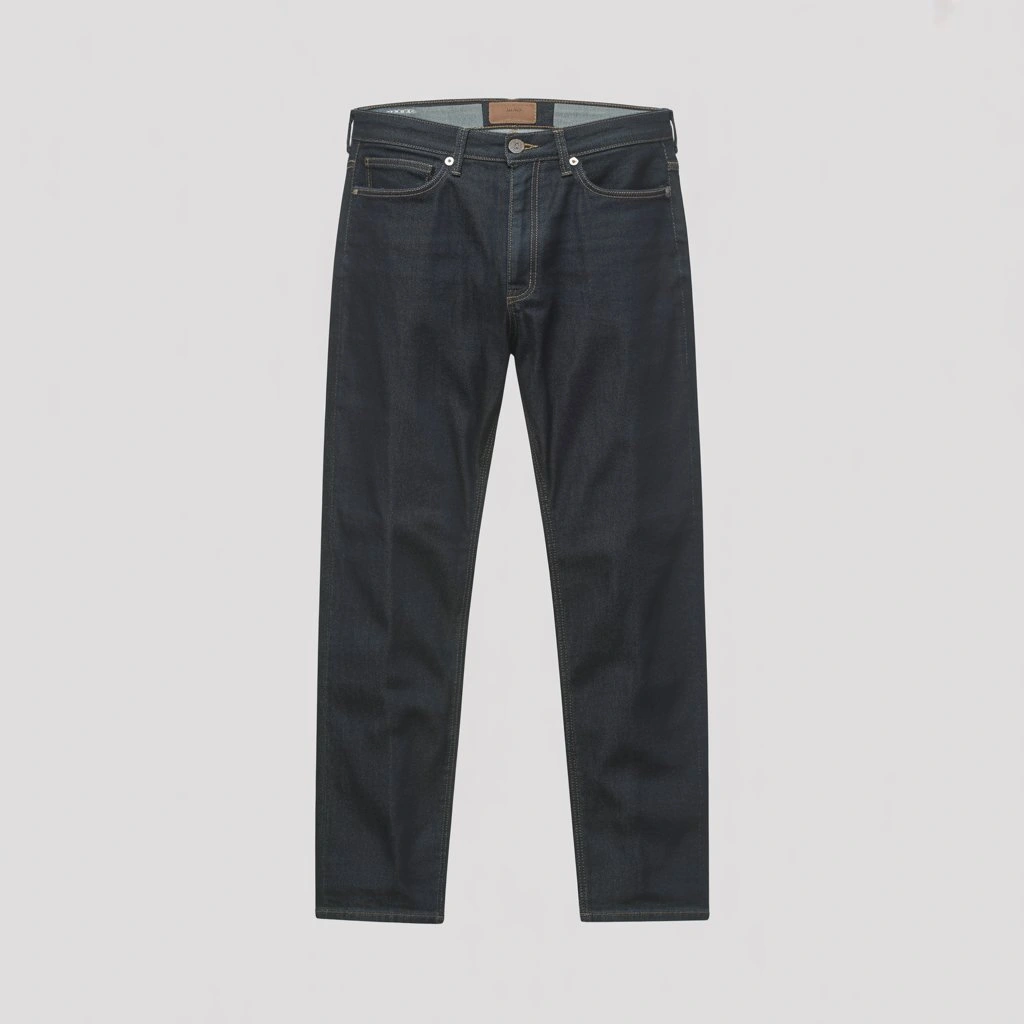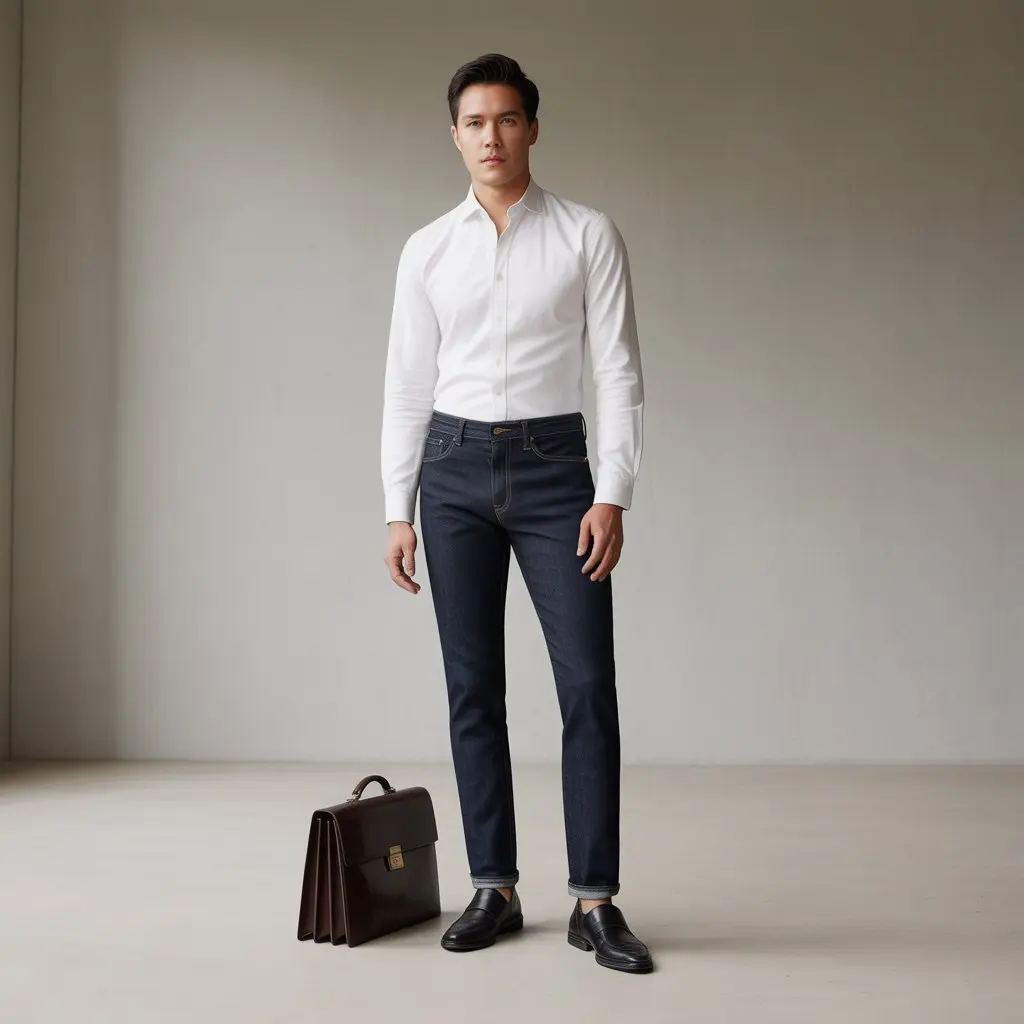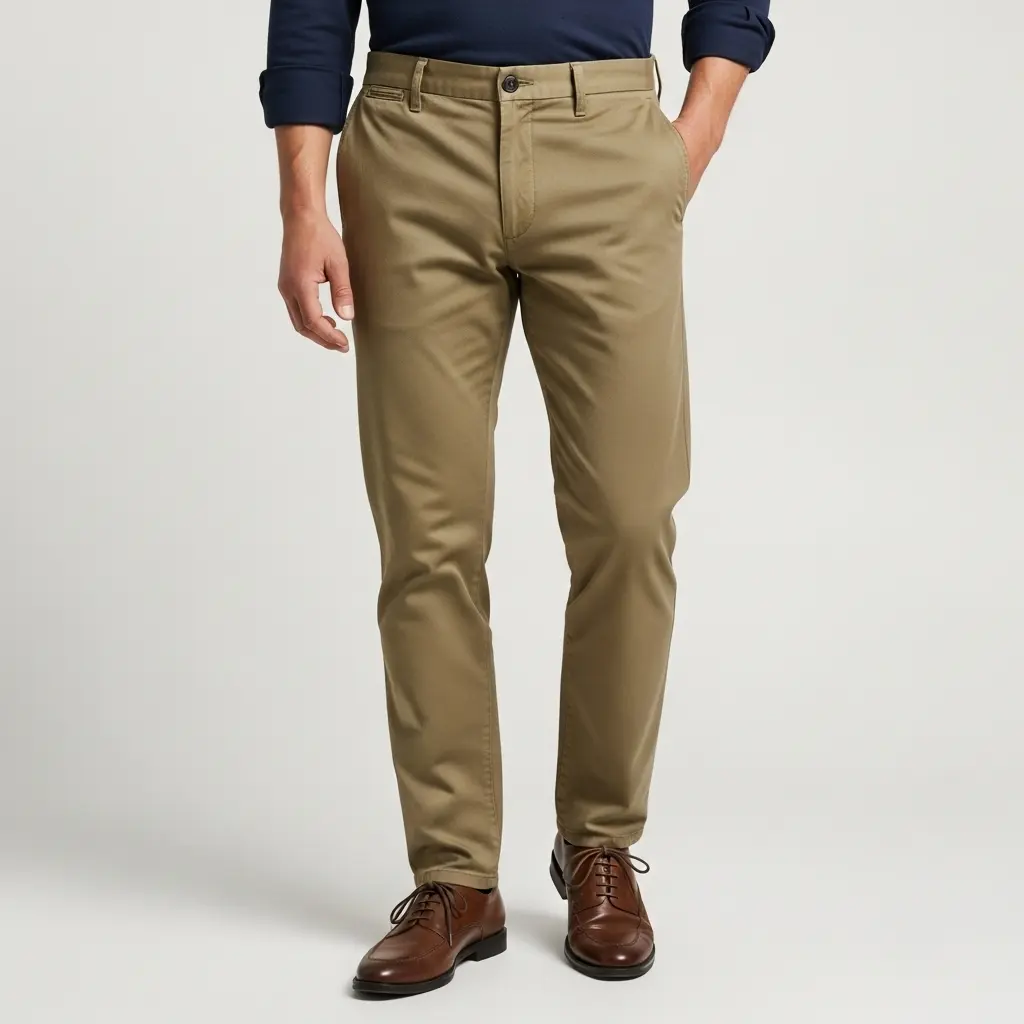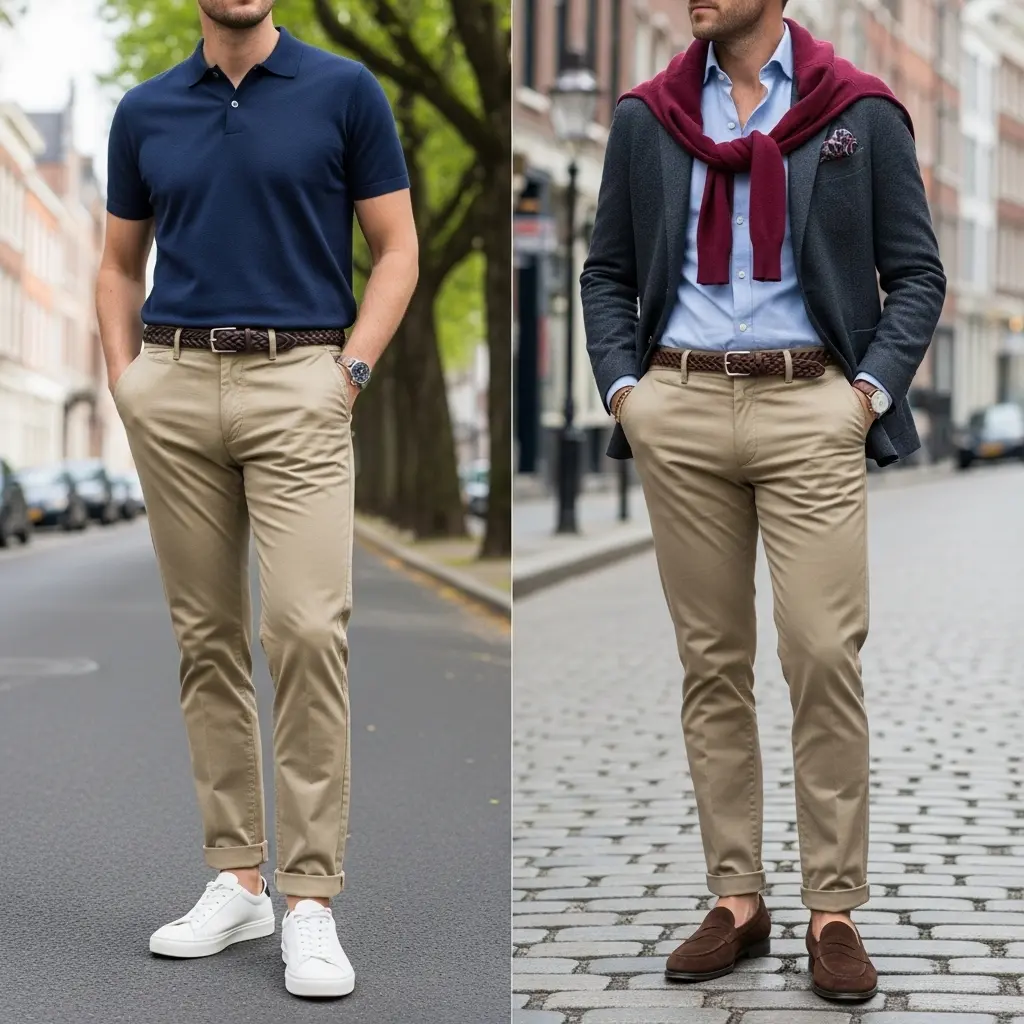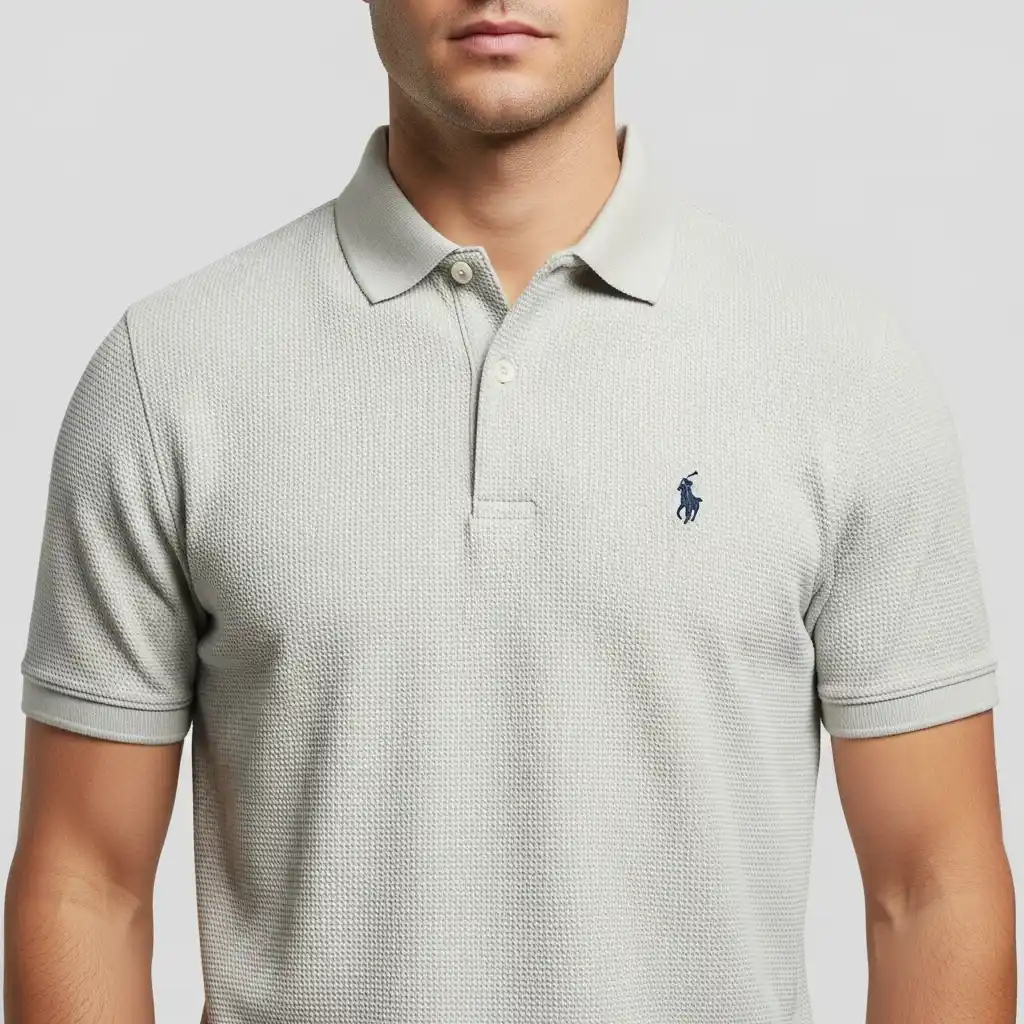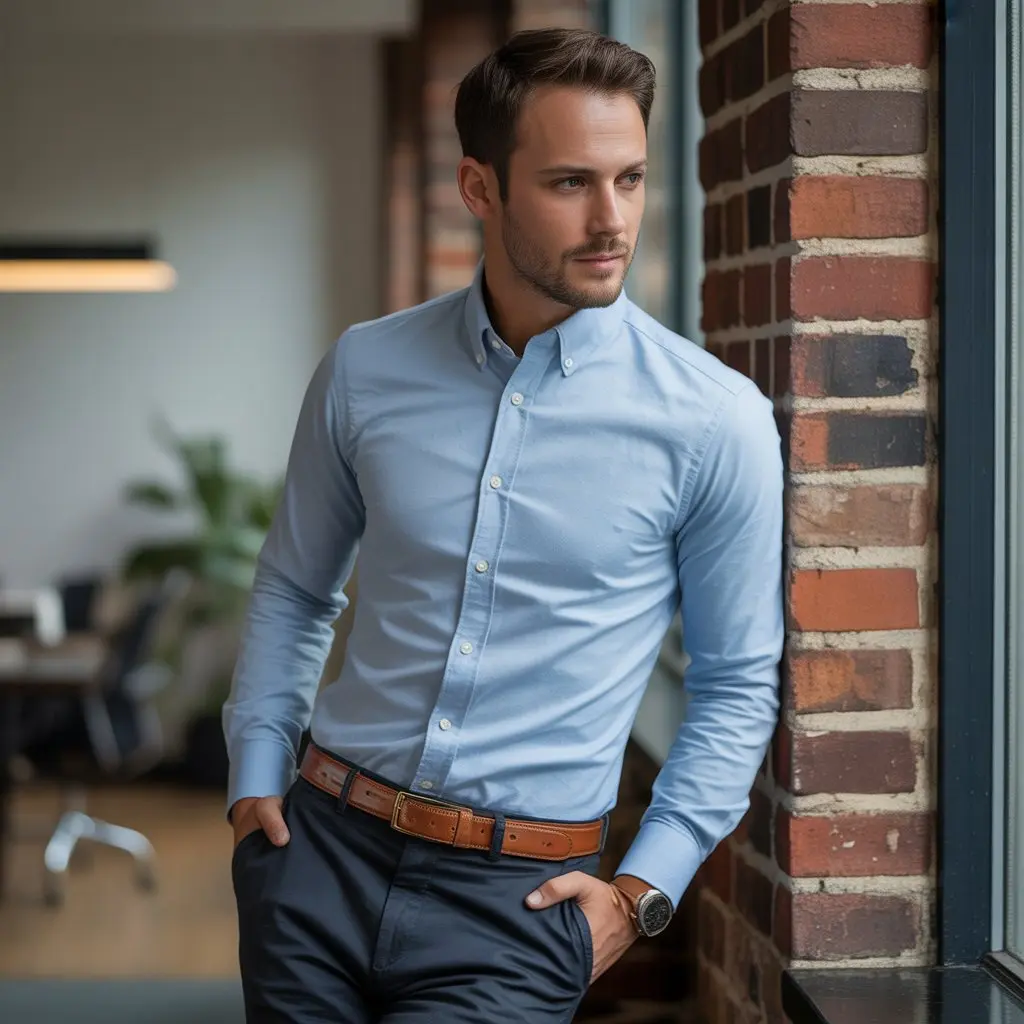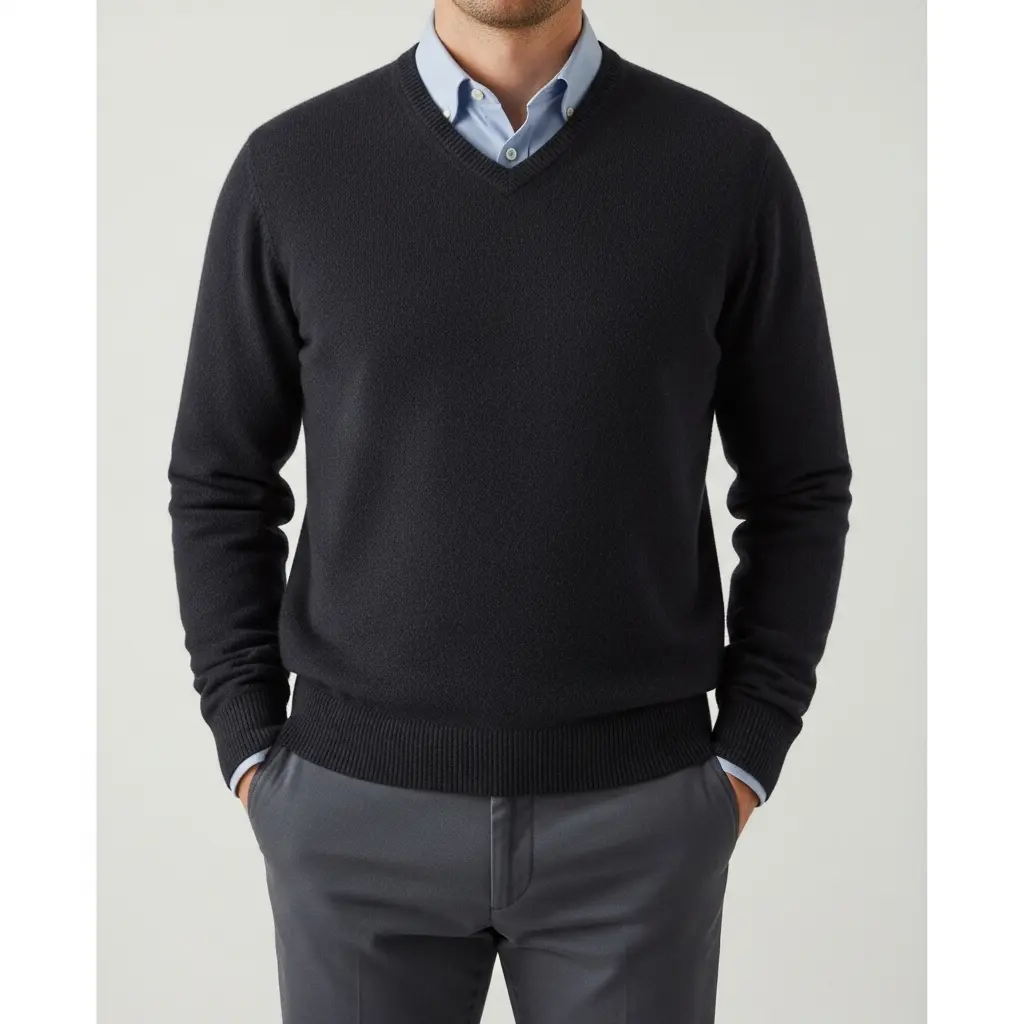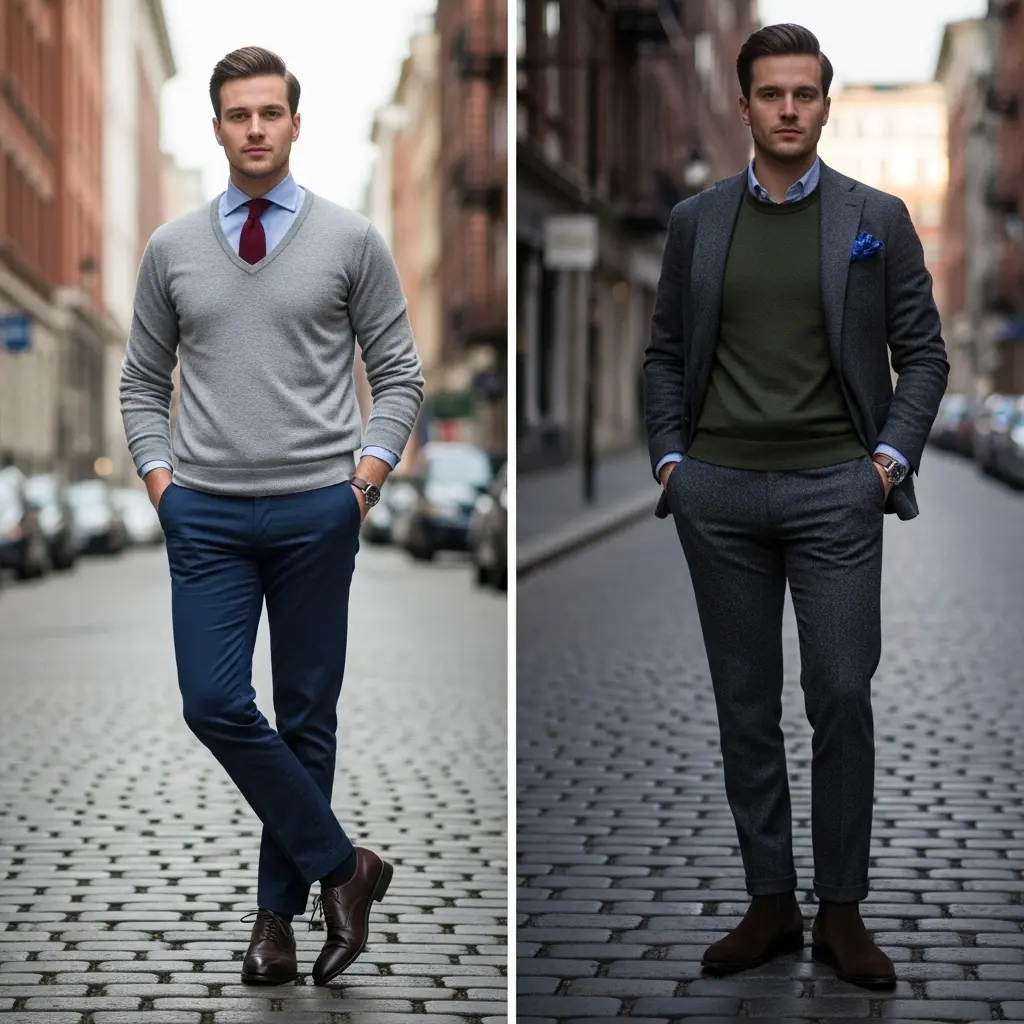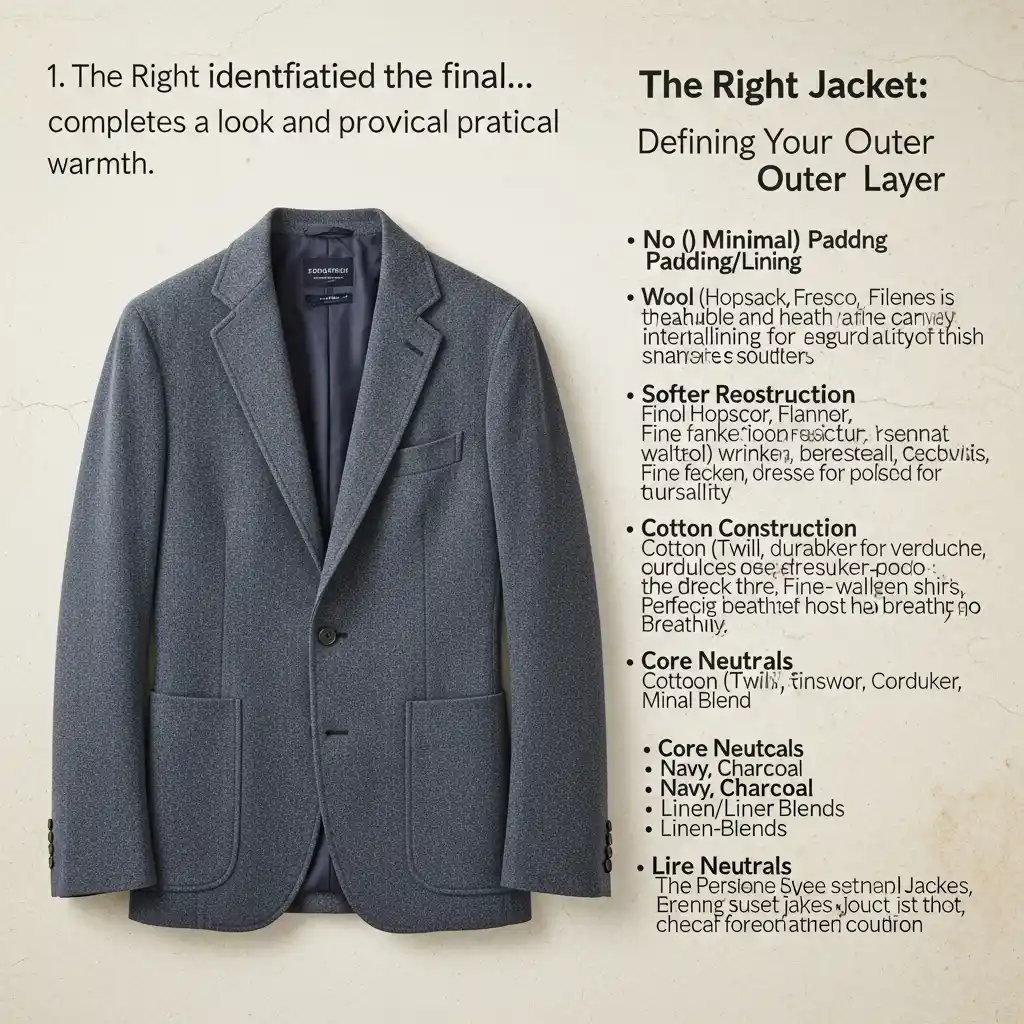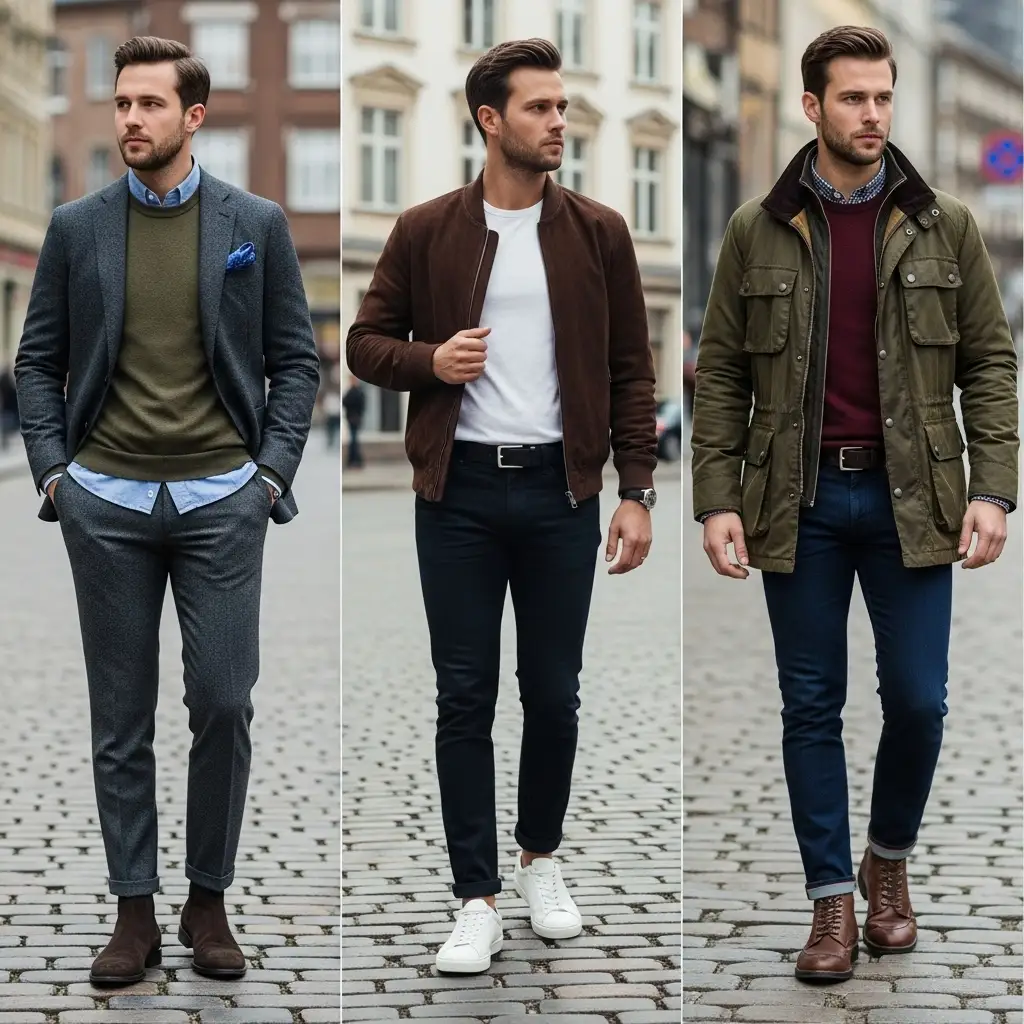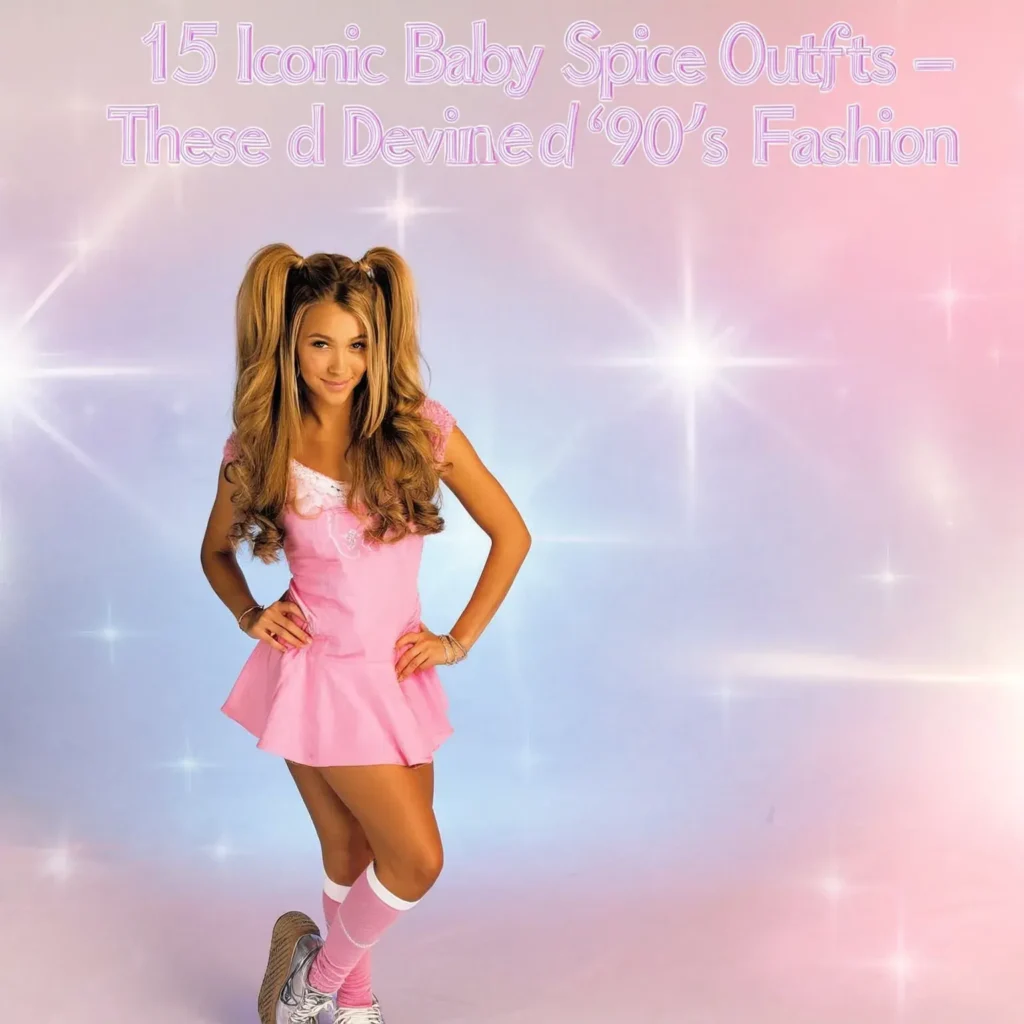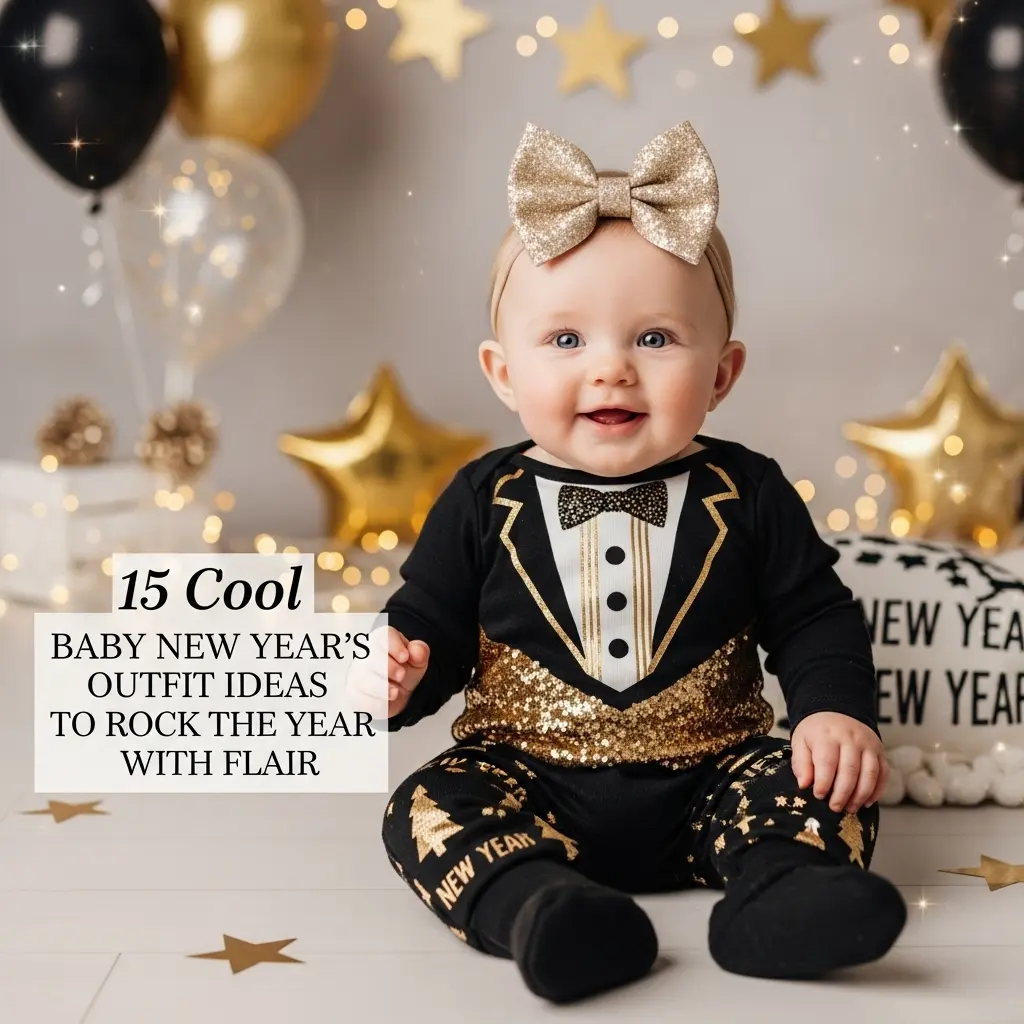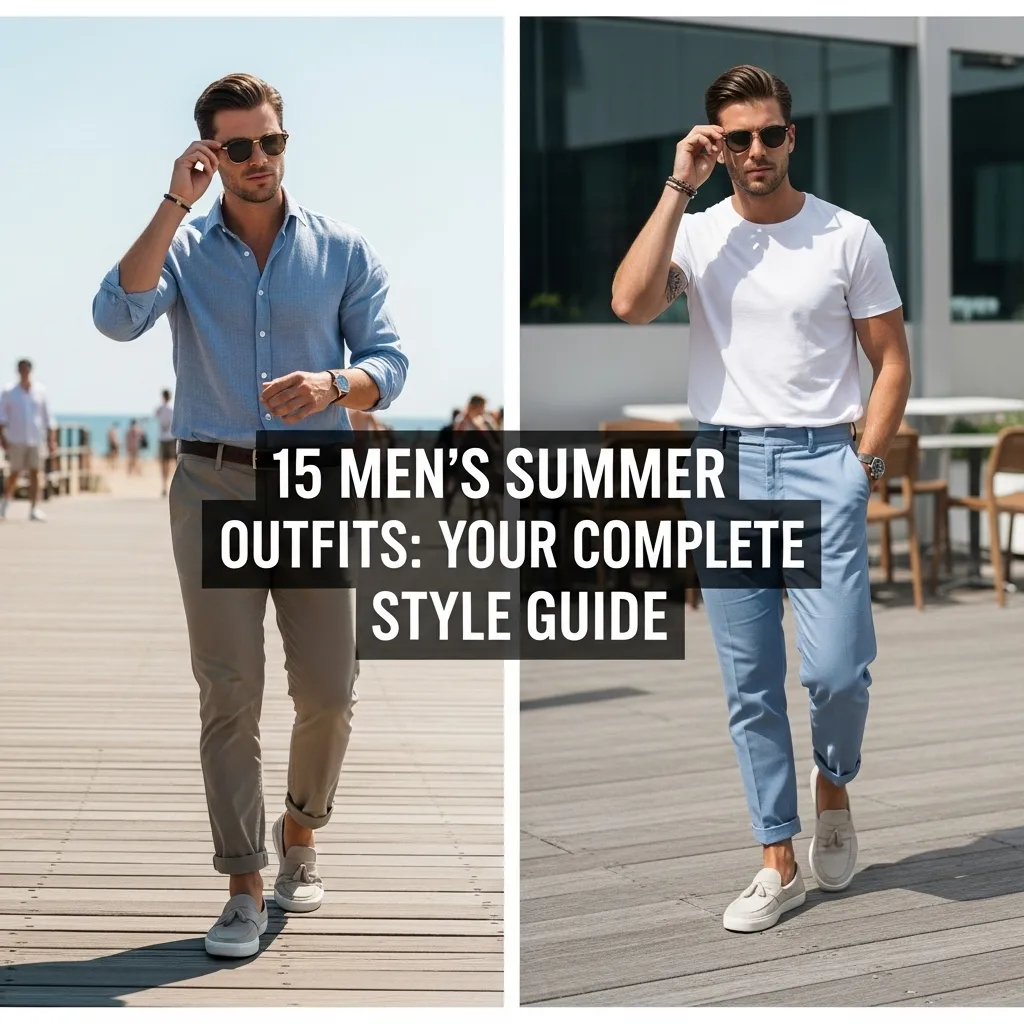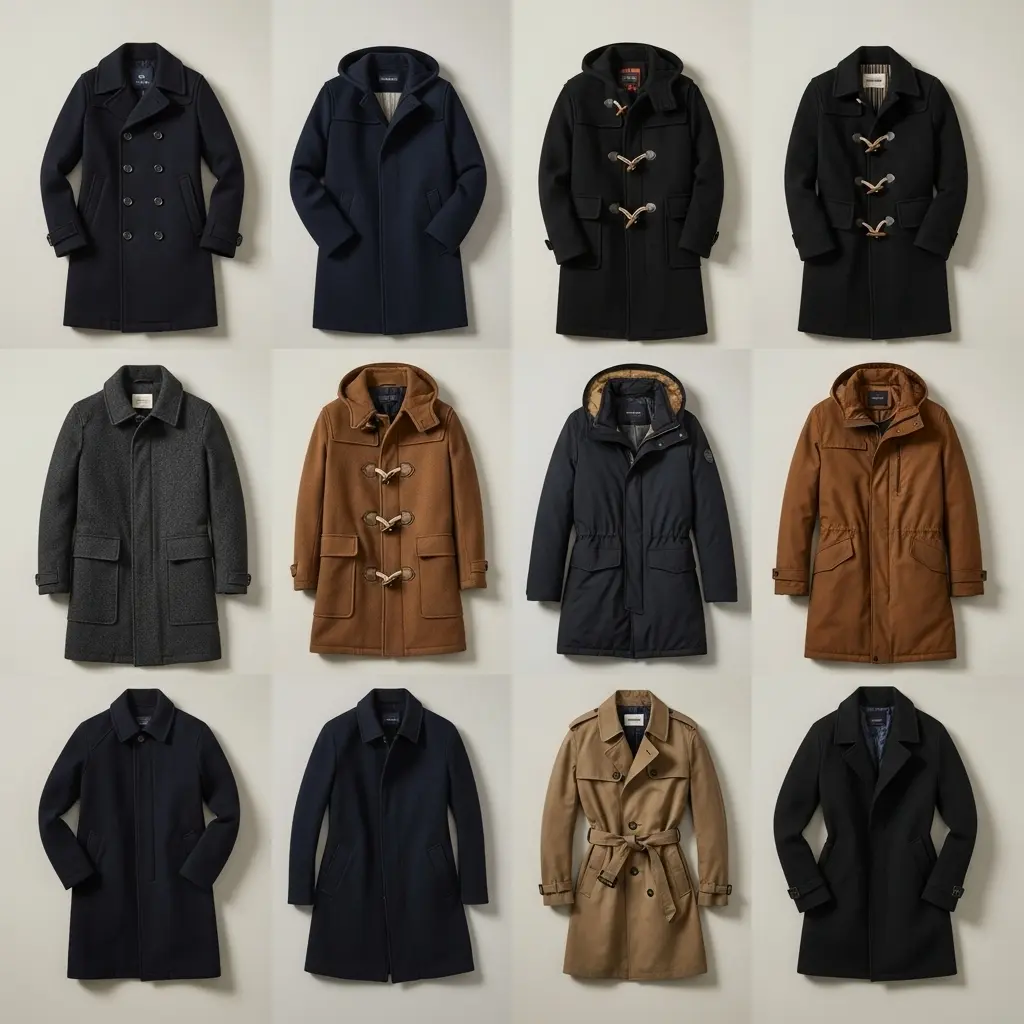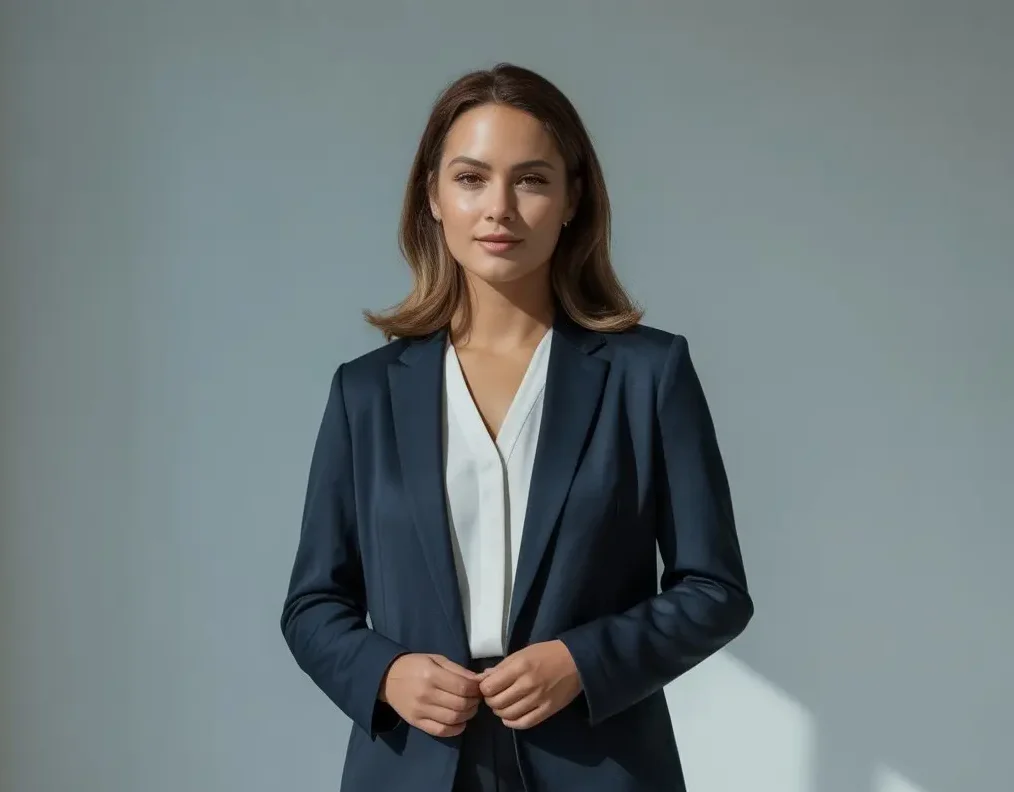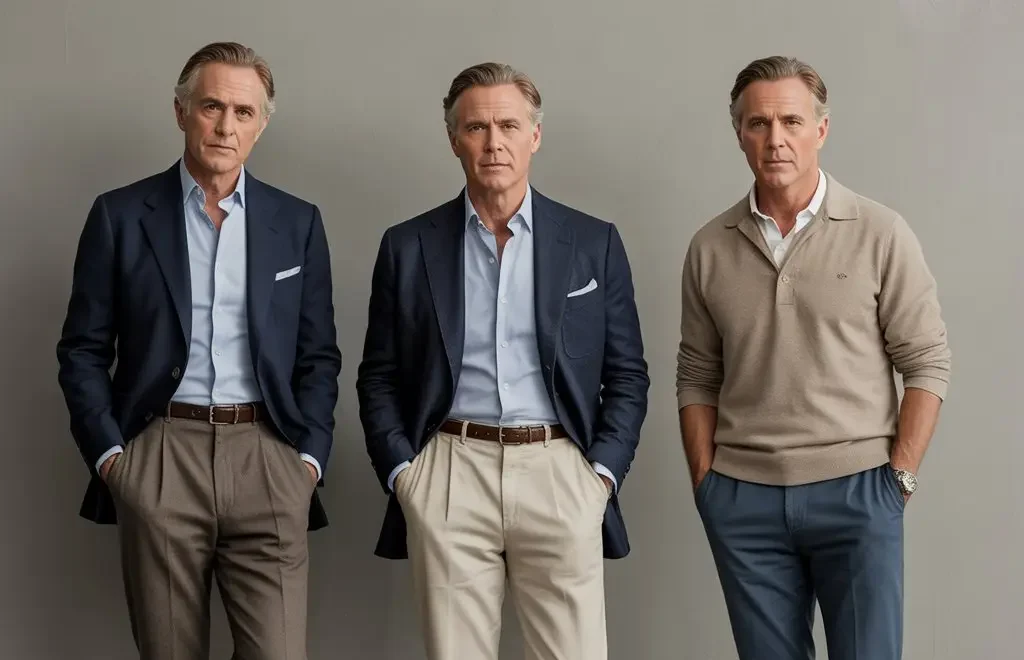
How An Older Man Should Dress: A Complete Style Guide
How An Older Man Should Dress: A Complete Style Guide
Age brings wisdom, experience, and a refined sense of self. Your wardrobe should reflect this evolution, not fight against it. Dressing well as an older man isn’t about chasing youth or following fleeting trends—it’s about embracing timeless style, proper fit, and quality pieces that communicate confidence and sophistication.
Table of Contents
The Foundation: Fit Is Everything
The most expensive suit in the world looks terrible if it doesn’t fit properly. As bodies change with age, many men continue wearing the same sizes they wore decades ago. This is perhaps the single biggest style mistake older men make.
A well-fitted garment should skim your body without being tight or baggy. Shoulders on jackets and shirts should align with your natural shoulder line. Trousers should sit comfortably at your natural waist, not below your belly. Sleeves should end at your wrist bone, allowing about half an inch of shirt cuff to show when wearing a jacket.
Consider working with a skilled tailor. Even affordable clothing can look expensive when properly altered. A tailor can adjust sleeve length, taper trousers, take in waists, and shorten hems. This investment transforms your entire wardrobe and instantly elevates your appearance.
Quality Over Quantity: Building a Thoughtful Wardrobe
At this stage of life, you don’t need thirty mediocre shirts. You need ten excellent ones. Shift your purchasing philosophy from quantity to quality. Better fabrics feel more comfortable, drape better, and last significantly longer.
Look for natural fibers: cotton, wool, linen, and cashmere. These materials breathe better, regulate temperature, and develop character as they age rather than simply deteriorating. A well-made wool blazer can last fifteen years with proper care. A cashmere sweater becomes softer with each wear.
Investment pieces should include a perfectly fitted navy blazer, quality leather shoes, a versatile overcoat, and well-constructed trousers. These foundational items work across countless occasions and never go out of style.
Color Palette: Sophisticated Neutrals with Strategic Accents
Mature style gravitates toward refined, sophisticated colors. This doesn’t mean everything must be gray and beige, but garish colors and loud patterns rarely serve older men well.
Build your wardrobe around a core palette of navy, charcoal, gray, cream, white, and earth tones like olive, tan, and brown. These colors are universally flattering, easy to combine, and appropriate for virtually any setting.
Add personality through strategic pops of color. A burgundy sweater, forest green shirt, or rich blue pocket square provides visual interest without overwhelming your look. Avoid neon colors, overly bright hues, and anything that feels costume-like.
When it comes to patterns, opt for subtle sophistication. Thin pinstripes, small checks, understated plaids, and classic houndstooth all work beautifully. Avoid large, bold patterns that can overpower your frame or look juvenile.
The Classic Casual Wardrobe
Dressing well extends far beyond formal occasions. Your casual wardrobe deserves equal attention and should reflect the same principles of fit, quality, and thoughtful selection.
Well-Fitted Denim: Dark-wash jeans are a cornerstone of a versatile and sophisticated menswear wardrobe. When chosen correctly, they offer a polished alternative to trousers while maintaining the comfort and casual appeal of denim. Here’s a detailed guide to selecting the perfect pair, combining classic appeal with modern sophistication:
Fit: The Foundation of a Sharp Silhouette
For a truly modern and refined aesthetic, the fit is paramount. We are aiming for a silhouette that is clean, tailored, and enhances the natural lines of the body without being restrictive or sloppy.
- Straight Fit: This is a timeless choice. A well-executed straight fit will have a consistent width from the thigh down to the ankle. It should skim the leg without hugging it, offering a comfortable amount of room. The key here is not baggy. Imagine a line dropping straight down from your hip – the jeans should largely follow this line. Slightly Tapered Fit: This is perhaps the most contemporary and flattering option for many body types. A slightly tapered cut means the jeans are straight through the thigh and then gradually narrow from the knee down to the ankle. This creates a sharper, more streamlined look, preventing excess fabric around the ankles without being a skinny fit. The taper should be subtle, not dramatic, maintaining balance. Avoidances: Steer clear of excessively wide straight legs that can appear dated and baggy. Similarly, avoid extreme skinny fits, as they often sacrifice comfort and can limit versatility, veering too far into a casual or trendy realm. A good pair of dark wash jeans should elevate, not restrict.
Wash: The Essence of Polish
The wash is critical for maintaining a clean and polished appearance. We are looking for depth and consistency.
- Dark Indigo: This is the quintessential choice. A rich, deep indigo wash provides a solid, uniform color that can easily be dressed up or down. It has a natural luster that speaks to quality. Deep Blue: Similar to dark indigo, a deep blue wash offers excellent versatility. The key is that it remains dark and uniform, without any pre-faded areas. Avoidances: Absolutely avoid any form of distressing, whiskering, sandblasting, or artificial fading. These elements instantly casualize the jeans and detract from the sophisticated aesthetic we are aiming for. The beauty of a dark wash lies in its pristine, unadulterated color, which will develop its own unique patina naturally over time with wear.
Rise: The Balance of Comfort and Style.
The rise significantly impacts both comfort and of a truly versatile and sophisticated menswear wardrobe. Let’s delve into the nuances of the overall visual proportion of your outfit.
- Mid-Rise: This is the ideal sweet spot. A mid elevate a simple pair of jeans into a statement of refined style.
Fit-rise sits comfortably just below the natural waistline, ensuring that the jeans stay put without riding too high or too low. It provides enough coverage to be worn with tucked-in shirts without exposing: The Foundation of a Sharp Silhouette.
For the midriff, a look that is both classic and contemporary and offers a classic, balanced look.
- Avoidances: Low-rise jeans can often feel dated, uncomfortable, and expose too much when the fit is paramount. We are aiming for a silhouette that flatters the leg line without being restrictive or sloppy. Straight Leg: This is your timeless classic, bending or sitting. High-rise jeans, while having their place in certain fashion contexts, can be more challenging to style for a universally sophisticated person. A well-cut straight-leg jean will fall cleanly from the hip to the ankle, offering a comfortable yet tailored appearance. It should have enough room to move freely, but not so much that it bunches look and may not suit or sag. This fit is incredibly versatile and works well for most body types.S all body types for this particular aesthetic. lightly Tapered: For a more modern and streamlined aesthetic, a slightly tapered cut is an excellent choice. The
Fabric and Construction: The Mark of Quality
Quality taper should be subtle, starting from the knee down. Fabric and robust construction are essential for durability, gently narrowing towards comfort, and maintaining the shape of the jeans over time.
- Fabric Weight: Look for denim in the ankle. This creates a sharper profile that looks 1 fantastic with both dressier shoes and sleek sneakers, without veering into the “2-14 oz range. This is a good medium-to-skinny territory. The key here is heavyweight denim that offers structure, durability, and a substantial feel without being overly rigid. Lighter weights (under 11 oz) can drape too, is “slightly”—we’re not looking for an aggressive taper that hugs the calf.
What to Avoid: Baggy fits, excessively wide leg openings, or anything that creates an undefined, loose fit and may not retain its shape as well.
- shape around the leg. Overly skinny or spray-on fits are also to be avoided a Stretch Content: A small amount of stretch is highly recommended for modern wearability. sophisticated, lasting Look for **1-2% elastane (or spandex look.
Wash: The Essence of Elegance
The wash is where “dark” truly comes. This provides comfort and flexibility, allowing for ease of movement without compromising the shape in play, signifying a commitment to polish and versatility.
- Deep Indigo: This is the gold standard. A rich, uniform dark indigo that maintains or integrity of the denim. Too much stretch (over 3%) can make the denim feel less like traditional jeans and more like jeggings, which is not is almost black in certain light is incredibly versatile. It offers a sophisticated base that can be dressed up to achieve the desired effect. Or down with Construction Details:* Selvedge Denim (Optional but Recommended): If your budget allows, selvedge denim.Solid Deep Blue: A dark blue that is consistent in color is a fantastic choice. The tightly woven edge (often recognized by a colored thread along the outseam when cuffed) signifies higher quality, without any better durability, and often a more structured fabric that ages beautifully. Strong Stitching: Inspect for fading or artificial wear; also falls into this category. The goal is a wash that looks clean and und the stitching. It should be elucidated.
What to Avoid:
- Distressing, Whiskering, Fading: Absolutely steer clear of any pre, tight, and consistent, often in a contrasting but subtle color (like a dark gold or tobacco threadressed areas, artificial) that complements the indigo.Quality Hardware: Zippers, buttons, and rivets should feel fading on the thighs or seat, or pronounced whiskering around substantial and well-secured the crotch. These elements are instantly casual. YKK zippers are a standard of quality. Reize the jean and detract from a polished aesthetic. Light Washes: While they have their place in casual wear, light wash jeans do not offer the same level offorced Stress Points:** Look for reinforced stitching at pocket sophistication we’re aiming for.Exaggerated Contrast Stitching: Keep stitching subtle and tonal, ideally in a thread color that blends seamlessly with the denim. High-contrast orange or yellow stitching can cheapen the look.
Rise: openings and other high-stress areas to The Sweet Spot of Comfort and Style
The rise significantly impacts both comfort and prevents tears.
Styling Tips: Elevating the overall proportion of your outfit.
- Mid-Rise: This is the ideal Your Dark Wash Denim
Dark wash jeans are incredibly versatile and can be dressed up with ease. choice. A mid-rise
- Smart Casual:Top: Pair of jeans sits comfortably on your natural waist, just below the navel with a crisp button-down shirt. It offers ample coverage, prevents the dreaded “builder’s crack,” and creates a balanced (ox look withford cloth, chambray, or fine-gauge pique polo shirts tucked in or worn), a merino wool sweater, or a well-fitting crew-neck t-shirt layered out. It’s the most flattering and comfortable option for a modern gentleman.
What to Avoid:
- Low-Rise: These can look dated and often under an unstructured blazer. Create an unflattering* Footwear: Classic leather sneakers silhouette, especially when sitting. High-Rise: While making a comeback (like Common Projects in certain fashion circles, a true high-rise can be challenging or similar to minimalist styles), suede chukka boots, desert boots, or sleek loafers.Business Casual to pull off casually (Elevated):Top: A, and might lean tailored sport coat or blazer over a fine, too much into a specific vintage aesthetic, detracting from the modern appeal, a we seek.
Fabric and Construction: The Mark of Quality
The quality of the denim and its construction, a dress shirt, or a sophisticated polo.* Footwear: Polished leather derbies, brogues, or Chelsea boots. The darker the wash, the easier it is to integrate into this setting.
- Weekend Refinement:Top: A heavyweight t-shirt, a rugby shirt, or a sophisticated are crucial for durability, comfort, and how flannel shirt.Footwear: High-quality leather or suede boots (work boots, service boots), or refined jeans will age sneakers.Colors: Embrace a palette of neutrals.Fabric, earth tones, and rich Weight: Look for a medium-weight denim, typically between 12-14 ounces. This weight offers good structure and durability without feeling overly stiff or heavy, with jewel tones. Think white, cream, grey, navy, olive green, burgundy, and tan. These colors complement. It will break in beautifully over time, dark indigo beautifully.
Avoidances: Pit, molding to your body.
- Stretch Content (Optionalfalls to Sid but Recommended): A small step
To percentage of elast maintain that timeless yet contemporary look, be mindful that these common amounts (1-2%) are highly recommended. This provides comfort missteps:
- Trendy Cuts, ease of movement, and excellent shape retention, preventing the jeans from bagging: Avoid anything overly out at the knees or specific to a fleeting seat. However, avoid anything trendy, like extreme flares, with excessively overly stretch (e.g., 5 exaggerated or more) bootcuts, or heavily ripped, as it can make the denim styles. Stick to the classic straight or subtly tapered. look less authenticExcessive Branding: Subtle branding is fine, but avoid jeans with large, prominent logos, aggressive and more like jeg pocket stitching, or ostentatious hardware. The things.Selvedge vs. Non-Selvedge quality of the denim, and while selvedge denim is often associated with premium quality, and fit should speak for itself. Ill-Fitting Silhouettes: This is the most crucial avoidance. Jeans that are too tight, too baggy, too a distinct aesthetic long (puddling at the ankles), or too short (creating (especially when c an awkward “high water” look without intentional cropping) will undermineuffed), it’s not a strict requirement for a polished dark wash jean. High-quality non-selvedge denim can be just as good. Focus on the overall fabric any feel, and weave. Construction Details: A St attempt at sophistication. Ensure the length is just right, itching: Look for strong, even stitching. Double-stitched seams with a clean break over your area are a good indicator of durability. Hardware: Quality zippers ( chosen footwear, or a slight stack if you preferYKK is a reliable standard), and sturdy buttons (copper. A single, neat cuff can also work well, especially with selvedge denim.
or antiqueBy adhering to these guidelines, you can confidently select brass tend to be dark wash jeans that not only fit impeccably but also exude an understated elegance, making them a true more enduring. are important.* Pockets: Ensure pockets are well-constructed wardrobe work and don’t gape.
Styling Tips: Elevhorse for years to come.
The beauty of a well-chosen dark wash jean lies in its versatility. It bridges the gap between casual and business casual with an effortless kind of refined look we’re aiming for: grace.
- Smart Casual: Pair with a crisp button-down shirt (Oxford cloth, chambray, or fine stripe) and a well-fitting blazer or sports coat.Refined Everyday: Combine with a merino wool or cashmere crew-neck sweater, a fine-gauge knit polo shirt, or a high-quality, perfectly fitted t-shirt worn under an unbuttoned overshirt.Footwear: Dress Boots: Chelsea boots, chukka boots, or service boots in leather or suede elevate the look.Loafers: Penny or tassel loafers in leather or suede add a sophisticated touch.Derbies/Brogues: A classic choice for a more dressed-up ensemble.Sleek Sneakers: Opt for minimalist leather sneakers in white, black, or deep navy—think Common Projects or similar styles. Avoid chunky athletic trainers. Accessories: A quality leather belt that complements your footwear, a sophisticated watch, and perhaps a subtle pocket square if wearing a blazer, will complete the look.
Here’s an illustrative image to bring these styling tips to life, showcasing a classic ensemble with dark wash jeans.
The model walks down a stylish city street, wearing perfectly tailored dark wash jeans that are a deep, uniform indigo with no fading or whiskering. The fit is a subtle straight-to-tapered cut that falls cleanly to his brown leather Chelsea boots. He wears a light blue button-down shirt, left unbuttoned at the collar, under a sophisticated charcoal gray blazer. A burgundy knit sweater is draped casually over his shoulders, and a brown leather belt with a simple buckle cinches the jeans. A watch adorns his left wrist, and a subtly patterned pocket square peeks from his blazer pocket. The overall look is polished, modern, and refined.
Avoidances: Pitfalls to Sidestep
To maintain that timeless yet contemporary allure, it’s critical to know what to steer clear of:
- Overly Trendy Cuts: Stay away from exaggerated flares, extreme drop-crotches, or “carrot” fits. These have a short shelf life in fashion. Excessive Embellishment: No patches, rips, overly elaborate embroidery, or unnecessary hardware. Simplicity and quality are key. Poor Fabric Quality: Thin, flimsy denim that quickly loses its shape or has an artificial sheen.Ill-Fitting Silhouettes: Jeans that are too tight, too baggy, too long, or too short. Proper length is essential—a slight break over the shoe, or no break if cuffed neatly, is ideal. Logos and Branding: Avoid prominent branding or large, visible logos on the pockets or elsewhere. The quality and fit should speak for themselves.
By adhering to these guidelines, you will select dark wash jeans that not only endure the test of time in terms of style but also serve as a versatile and sophisticated anchor for a multitude of contemporary outfits. This approach ensures you invest in pieces that truly enhance your personal aesthetic.
Fabric Quality: The Cornerstone of Enduring Style
The choice of fabric is paramount for chinos that are meant to last, feel comfortable, and present a refined appearance across various settings.
- Premium Cotton Twill: This is the gold standard. Look for high-density, long-staple cotton twill with a smooth, slightly lustrous finish. Durability: Densely woven twill resists abrasion and retains its structure beautifully over time, preventing sagging or premature wear.Comfort: Long-staple cotton feels soft against the skin, is naturally breathable, and allows for excellent air circulation, making it suitable for year-round wear.Polished Appearance: The subtle sheen and tight weave of premium twill lend themselves to a sophisticated look, allowing the chinos to dress up effectively.Cotton-Elastane Blend (The Modern Advantage): A blend of 97-98% cotton and 2-3% elastane (spandex) is highly recommended.Flexibility & Movement: The slight stretch provides unparalleled comfort and ease of movement, crucial for all-day wear and active lifestyles.Shape Retention: This blend ensures the chinos hold their tailored silhouette, preventing bagging at the knees or seat even after extended wear, which is vital for maintaining a polished appearance. Avoid: Fabrics that feel flimsy, overly stiff, or contain a higher percentage of synthetic fibers, as these can detract from breathability, drape, and the natural hand of quality cotton.
Color Selection: The Foundation of Versatility
Optimal neutral shades are the key to maximizing adaptability, allowing your chinos to effortlessly integrate with diverse wardrobe pieces.
- Essential Core Neutrals (Your Starting Point): Khaki/Tan: The timeless original. Highly versatile, it pairs beautifully with almost any color palette, from crisp whites and blues to earthy greens and richer burgundies. Perfect for both relaxed and smart-casual looks.Navy Blue: A sophisticated and universally flattering alternative to denim. Navy chinos offer a polished, authoritative look that transitions seamlessly from office to evening. Medium Grey: A highly adaptable and understated choice. Medium grey chinos serve as a neutral bridge, complementing both light and dark tops and footwear, offering a modern, minimalist aesthetic. Refined Secondary Neutrals (Expand Your Options): Olive Green: Adds depth and a subtle utilitarian sophistication. Olive pairs exceptionally well with blues, browns, creams, and other earth tones.Stone/Off-White: Excellent for warmer seasons or for creating a lighter, more refreshing aesthetic. These shades exude understated elegance. Strategic Advantage: By building your collection with these foundational neutrals, you ensure that every pair of chinos can be effortlessly mixed and matched, minimizing decision fatigue and maximizing your styling options.
Fit and Silhouette: The Blueprint for Clean Lines
A meticulously chosen fit is crucial for a streamlined, polished profile, eschewing unnecessary bulk or trends that quickly date.
- Slim-Straight Fit: This is a fantastic, universally flattering choice. It’s cut comfortably close through the thigh and then falls straight down to the ankle. Benefit: Provides a clean, unbroken line without being restrictive, offering a balanced silhouette that is neither baggy nor skinny.Tapered Fit (Subtle): For an even more contemporary and sharp appearance, a gentle taper from the knee down to the ankle is ideal.Benefit: Creates a sleek, streamlined leg profile that looks excellent with both dressier shoes and minimalist sneakers. The taper should be gradual and natural, not aggressive or hugging the calf. Mid-Rise: The optimal rise for both comfort and aesthetic balance. It sits just below your natural waistline. Benefit: Provides secure coverage, ensures the chinos stay in place, and creates flattering proportions whether your shirt is tucked or untucked.Length (The “Break”): No Break: The hem skims the top of your shoe without any creasing. This is the cleanest, most modern look. Slight Break: A single, subtle crease where the hem meets the shoe. A classic and widely accepted length.Neat Cuff: For a deliberate, slightly more relaxed but still polished look, a single, crisp cuff (1-1.5 inches) can be very effective, especially with a tapered fit. Avoid: Baggy, wide-leg, or overly skinny fits. Also, steer clear of excess fabric bunching at the ankles (known as “puddling”).
Construction Details: The Art of Subtle Refinement
Minimalist design is achieved through impeccable, subtle details that speak to quality rather than overt embellishment.
- Flat Front: Non-negotiable for a clean, modern aesthetic. Avoid pleated chinos entirely, as they tend to look dated. Discreet Pockets:Front: Slash pockets or on-seam pockets that lie perfectly flat against the body without gaping. Back: Jetted pockets (a neat slit opening) or subtle welted pockets (often with a single button closure) are preferred. These integrated pocket styles maintain a smooth back profile. Avoid external patch pockets. Tonal Stitching: Stitching should either match the fabric color exactly or be in a very subtly contrasting tone (e.g., dark grey stitching on navy fabric).Benefit: This minimalist approach ensures the focus remains on the clean lines and quality of the fabric, rather than drawing attention to construction details. Avoid: Heavy, contrasting topstitching (e.g., bright orange on dark fabric), which lends a more casual, workwear aesthetic. Quality Hardware: Inspect zippers and buttons.Zippers: Should be sturdy and operate smoothly (YKK is a trusted brand).Buttons: Look for durable materials like horn, urea, or high-quality metal. They should be securely sewn. External Branding: Premium chinos should not rely on prominent logos or branding. The quality of the fit, fabric, and construction should be the only statement.
Styling Strategies: Seamless Transitions Across Occasions
The true power of quality neutral chinos lies in their ability to adapt to diverse dress codes with strategic pairings.
- Casual Outings (Weekend Brunch, Errands, Relaxed Gatherings):Tops: Pair with a high-quality, well-fitting crew-neck or V-neck t-shirt (plain white, grey, or navy), a classic pique polo shirt, a casual button-down (chambray, linen, or soft flannel), or a lightweight knit sweater.Footwear: Minimalist leather sneakers (white, black, or matching neutral), classic canvas sneakers, driving mocs, espadrilles, or quality boat shoes.Accessories: A casual leather or canvas belt, sunglasses, and a simple watch.Semi-Formal Occasions (Casual Fridays, Dinners, Smart Gatherings):Tops: Elevate with a crisp Oxford cloth button-down shirt, a fine-gauge merino wool sweater (crew neck, V-neck, or roll neck), a sophisticated knit polo, or a dress shirt (tucked in, if appropriate).Layering: Crucial for semi-formal. Add an unstructured blazer, a tailored sport coat, or a sleek bomber jacket. Footwear: Leather loafers (penny, tassel), suede chukka boots, polished leather derbies, or refined Chelsea boots.Accessories: A high-quality leather belt that complements your shoes, a more formal watch, and potentially a pocket square if wearing a blazer.
Here’s a visual example demonstrating the versatility and sophisticated styling of premium chinos:
The image displays a split view, showcasing a man wearing the same pair of perfectly tailored khaki chinos in two different styling contexts, illustrating their versatility.
Left Panel (Casual Styling):
The man stands outdoors on a tree-lined street. He wears the khaki chinos with a neat, slim-tapered fit, cuffed once to just above his white minimalist leather sneakers. He pairs them with a well-fitted navy blue knit polo shirt, tucked in. A braided brown leather belt cinches his waist, and he wears a wristwatch. His hands are casually in his chino pockets. The overall look is effortlessly stylish, clean, and perfect for a relaxed, casual outing.
Right Panel (Semi-Formal Styling):
The man stands on a cobblestone city street with charming old buildings in the background. He wears the same khaki chinos, this time paired with dark brown suede penny loafers. His top consists of a light blue dress shirt under a charcoal grey unstructured blazer. A rich burgundy knit sweater is elegantly draped over his shoulders. He has the same braided brown leather belt and wristwatch, and a subtle pattern peeks from his blazer’s pocket square. His hands are again casually in his chino pockets. This look demonstrates a refined, semi-formal aesthetic suitable for an evening dinner or smart casual event.
Maintenance Recommendations: Preserving Your Investment
Proper care ensures your premium chinos retain their fabric integrity, color vibrancy, and sharp appearance for years.
- Follow Care Labels: Always adhere to the specific washing instructions provided by the manufacturer.
- Wash Cold, Inside Out: Use cold water on a gentle cycle. Washing inside out protects the outer fabric from abrasion and helps prevent fading, especially with darker colors like navy.
- Mild Detergent: Opt for a mild, color-safe detergent. Avoid harsh chemicals or excessive bleach, which can damage cotton fibers and strip color.
- Avoid Overloading: Don’t overload the washing machine, as this can prevent proper cleaning and cause unnecessary friction on the fabric.
- Air Dry Preferred: The best method is to hang your chinos to air dry, shaping them as they dry to minimize wrinkles. This prevents shrinkage and damage from high heat.
- Low Heat Tumble Dry (If Necessary): If using a dryer, select a low heat setting and remove them while still slightly damp. Smooth them out and hang immediately to finish drying, reducing the need for extensive ironing.
- Ironing for Crispness: For a truly polished look, especially for semi-formal wear, iron your chinos on a medium-hot setting. A crisp crease along the leg can further enhance their tailored appearance.
- Spot Clean Promptly: Address any spills or stains as soon as possible with a damp cloth and mild soap to prevent them from setting.
By diligently applying this comprehensive framework, you will successfully curate a collection of premium neutral-colored chinos that not only exude timeless style but also offer unparalleled functionality and adaptability across all casual and semi-formal dimensions of your wardrobe.
You’ve hit on another essential wardrobe workhorse: the polo shirt. It truly occupies that perfect sweet spot between a casual t-shirt and a more formal button-down, making it incredibly versatile for “countless casual situations,” as you aptly put it. The key, as with all foundational pieces, lies in selecting quality polos in solid colors or subtle patterns with substantial fabric that holds its shape.
Let’s delve into what constitutes a truly high-quality polo shirt and how to best integrate it into a contemporary wardrobe.
Fabric Quality: The Foundation of Form and Comfort
The fabric is paramount for a polo that looks good, feels comfortable, and maintains its structure over time. “Substantial fabric that holds its shape” is the critical directive here.
- Pique Cotton: This is the classic polo fabric and often the best choice for its unique texture and durability.
- Weave: Pique (pronounced “pee-kay”) has a textured, slightly raised waffle-like or honeycomb weave. This texture makes it naturally more breathable and gives it a more substantial feel than a jersey knit.
- Durability: The pique weave is inherently robust, helping the shirt hold its shape and resist wrinkling better than smoother knits. It also hides minor imperfections better.
- Comfort: While textured, quality pique cotton is soft and allows for excellent air circulation, making it comfortable in various temperatures.
- Mercerized Cotton: For a more luxurious and slightly dressier polo, mercerized cotton is an excellent option.
- Process: Mercerization is a treatment that strengthens cotton fibers and gives them a smoother, more lustrous finish, almost silk-like.
- Appearance: Polos made from mercerized cotton often have a subtle sheen, a smoother hand, and more vibrant color retention, making them suitable for slightly more elevated casual settings.
- Cotton-Linen Blends: Excellent for warmer climates or a more relaxed, breathable feel.
- Benefit: Combines the softness of cotton with the inherent coolness and textured slub of linen.
- Fine-Gauge Merino Wool (for Cooler Weather): While less common, merino wool polos are a fantastic option for cooler weather.
- Benefit: Merino wool is incredibly soft, breathable, temperature-regulating, and naturally odor-resistant, offering a refined look that’s warmer than cotton.
- Avoid: Thin, flimsy cotton jersey that drapes poorly, wrinkles easily, and loses its shape quickly. Also, avoid overly shiny or obviously synthetic fabrics, which can look cheap and lack breathability.
Color Selection: Versatility and Timelessness
As with chinos, solid, versatile colors are key. “Subtle patterns” should be interpreted very carefully.
- Core Solid Colors (Your Essential Collection):
- Navy Blue: Incredibly versatile, sophisticated, and a fantastic alternative to black.
- White: A crisp, timeless classic that pairs with literally everything.
- Black: Sleek and modern, especially effective in monochrome outfits or with lighter bottoms.
- Grey (Light to Charcoal): Another highly adaptable neutral that works across all seasons.
- Olive Green / Burgundy: Rich, earthy tones that add a touch of personality while remaining versatile.
- Subtle Patterns (Proceed with Caution):
- Micro-Prints/Micro-Textures: Very small, almost imperceptible geometric patterns or subtle textural variations within the weave can add interest without being loud.
- Subtle Stripes: Think very thin, evenly spaced horizontal stripes in complementary, muted colors (e.g., navy with thin white stripes).
- Avoid: Large, bold logos, overly busy prints, or contrasting color blocks that can quickly date the shirt or limit its versatility. The goal is understated elegance.
Fit and Silhouette: The Key to a Polished Look
A well-fitting polo should look tailored, not sloppy.
- Slim to Regular Fit:
- Shoulders: The seam should sit precisely on the edge of your shoulder bone.
- Chest & Torso: The fabric should skim your body without being tight or pulling across the chest. There should be enough room for comfortable movement without excess fabric billowing around the waist.
- Sleeves: Should end around mid-bicep. The opening should be snug but not restrictive.
- Length: The hem should fall just below your waist, long enough to stay tucked in if desired, but short enough to be worn untucked without looking sloppy (typically around mid-fly to just covering the belt).
- Collar: A substantial, well-constructed collar that stands up neatly (rather than flopping) is a hallmark of quality polo. Look for collars that aren’t too wide or too narrow, maintaining classic proportions. Some premium polos use a fabric known as “interlock” for the collar, which gives it more structure.
- Button Placket: A clean, two- or three-button placket is classic. Ensure the buttons are good quality (e.g., mother-of-pearl or similar).
- Avoid: Baggy, oversized fits (unless intentionally going for an athleisure look), overly tight or “muscle fit” polos, and collars that are flimsy or curl easily.
Construction Details: The Marks of Quality
- Stitching: Neat, even, and consistent stitching throughout, with no loose threads.
- Reinforced Seams: Especially at the collar, placket, and side vents (if present), to ensure durability.
- Side Vents: Many classic polos feature small side vents at the hem, which allow for greater freedom of movement and a cleaner drape when worn untucked.
- Buttons: High-quality buttons (e.g., mother-of-pearl, horn, or sturdy plastic) that are securely sewn.
Styling Strategies: Versatility in Action
Polo shirts are incredibly versatile, transitioning effortlessly across a spectrum of casual situations.
- Smart Casual / Elevated Casual:
- Bottoms: Pair with quality chinos (as discussed), dark wash jeans, or tailored shorts.
- Layering: Wear under an unstructured blazer, a lightweight bomber jacket, a chore jacket, or a clean-lined cardigan.
- Footwear: Leather loafers, suede chukka boots, minimalist leather sneakers, or classic canvas sneakers (e.g., Jack Purcells).
- Accessories: A quality leather belt, a refined watch.
- Relaxed Weekend:
- Bottoms: Tailored shorts, classic chinos, or lighter wash denim.
- Layering: Over a plain white t-shirt for added warmth/texture (untucked).
- Footwear: Espadrilles, boat shoes, canvas sneakers, or slides.
- Accessories: Sunglasses, a fabric belt.
- Sporty but Sophisticated:
- Bottoms: Performance-oriented tailored shorts or technical fabric chinos.
- Layering: Under a lightweight performance jacket.
- Footwear: Premium athletic sneakers (but keep them clean and stylish, not worn-out gym shoes).
Here’s an image to illustrate the sophisticated versatility of a quality polo shirt:
The image is a split view, showcasing a man wearing the same pair of perfectly tailored khaki chinos in two different styling contexts, demonstrating the versatility of a quality polo shirt.
Left Panel (Casual Styling):
The man stands on a tree-lined street during the day. He wears the khaki chinos with a neat, slim-tapered fit, cuffed once to just above his crisp white minimalist leather sneakers. He pairs them with a well-fitted, dark navy pique polo shirt, tucked in. A braided brown leather belt cinches his waist, and he wears a refined wristwatch. His hands are casually in his chino pockets. The overall impression is effortlessly stylish, clean, and ideal for a relaxed daytime outing.
Right Panel (Elevated Casual/Semi-Formal Styling):
The man stands on a cobblestone city street at dusk, with charming old buildings and soft streetlights in the background. He wears the same khaki chinos, this time paired with dark brown suede penny loafers. His base top is the same dark navy pique polo shirt. He layers over it with a charcoal grey unstructured blazer. A rich burgundy knit sweater is elegantly draped over his shoulders, adding a touch of sophisticated color and warmth. He has the same braided brown leather belt and wristwatch, and a subtle pattern peeks from his blazer’s pocket square. His hands are again casually in his chino pockets. This look effectively demonstrates a refined, semi-formal aesthetic suitable for an evening dinner or a smart casual event.
Maintenance Recommendations: Preserving Your Polo’s Integrity
Proper care is essential to ensure your quality polo shirts maintain their shape, color, and texture.
- Read the Label: Always follow the manufacturer’s specific washing instructions.
- Wash Cold, Gentle Cycle: Use cold water on a gentle cycle to prevent shrinking, color fading, and damage to the fabric’s weave.
- Mild Detergent: Use a mild, color-safe detergent. Avoid harsh chemicals or excessive bleach.
- Wash Inside Out: This protects the outer surface of the fabric and helps preserve color.
- Avoid Overloading: Give polos room to move in the wash to prevent excessive friction and stretching.
- Air Dry Flat or Hang Gently:
- Best Practice: To prevent stretching or distorting the shape (especially the collar and shoulders), air dry flat on a clean surface.
- Alternative: If hanging, use a padded hanger and ensure the shoulders are well-supported. Avoid hanging by the collar.
- Avoid: High heat tumble drying, which can cause shrinkage and damage elastic fibers (if present). If you must tumble dry, use the lowest heat setting and remove while still slightly damp.
- Ironing (Low Heat): If needed, iron on a low to medium heat setting, especially around the collar and placket, to maintain a crisp appearance. Use steam if available.
By focusing on these elements, you will build a collection of polo shirts that not only meet your needs for countless casual situations but also elevate your style with their enduring quality and sophisticated appeal. Look at this
Button-Down Shirts: You’ve articulated a fundamental truth in menswear: the Oxford Cloth Button-Down (OCBD) shirt is an infinitely versatile and truly indispensable garment. Along with quality polos and chinos, OCBDs form the holy trinity of smart-casual dressing, offering unparalleled adaptability for layering or wearing on their own. Your recommendation for white, blue, and subtle checks covers the essential bases for maximizing this versatility.
Let’s expand on what makes a quality button-down shirt a foundational wardrobe staple and how to leverage its full potential.
Fabric Quality: The Heart of the OCBD’s Enduring Appeal
The fabric is crucial for achieving that characteristic blend of durability, comfort, and sophisticated texture that defines a great button-down.
- Oxford Cloth (The Classic): This is the namesake fabric and generally the best choice.
- Weave: Oxford cloth is a basketweave fabric, which gives it a slightly coarser, more textured feel than smoother broadcloth or poplin. This texture is what makes it inherently more casual and resilient.
- Durability: The basketweave is robust, making it exceptionally hard-wearing and resistant to wrinkles. It softens beautifully with age and wear without losing its integrity.
- Breathability: High-quality cotton Oxford cloth is breathable, making it comfortable in various climates.
- Appearance: Its subtle texture adds depth and character, allowing it to be dressed up or down more easily than a pristine dress shirt.
- Royal Oxford: For a slightly dressier version that retains the Oxford texture but with a finer, more lustrous finish. It’s often used for shirts that bridge the gap between business casual and more formal office wear.
- Cotton-Linen Blends: For warmer weather, a cotton-linen blend button-down offers enhanced breathability and a beautifully relaxed texture, while still maintaining a sharp collar.
- Avoid: Thin, flimsy cotton that wrinkles excessively and lacks the characteristic substantial feel of true Oxford cloth. Also, avoid overly synthetic blends that don’t breathe well or have an artificial sheen.
Color Selection: The Pillars of Versatility
Your choice of white, blue, and subtle checks is perfect for building a highly adaptable wardrobe.
- White: The absolute king of versatility. A crisp white OCBD is timeless, clean, and can be paired with virtually any color or style. It works equally well under a suit jacket or with jeans.
- Light Blue (or Sky Blue): Another classic workhorse. Light blue is universally flattering, pairs effortlessly with navy, grey, brown, and khaki, and conveys an air of understated elegance.
- Subtle Checks (Gingham, Tattersall):
- Gingham: Small, even checks, usually in two contrasting colors (e.g., blue and white, grey and white). Opt for smaller checks for greater versatility.
- Tattersall: A pattern of thin, intersecting horizontal and vertical lines in alternating colors, usually on a white or light background.
- Benefit: These patterns add visual interest and texture without being overwhelming, making them ideal for casual or smart-casual layering.
- Avoid: Large, bold, or multi-colored checks that can limit versatility or appear overly trendy.
Fit and Silhouette: The Balance of Polished and Relaxed
A well-fitting button-down should offer a clean line without being restrictive, allowing for both solo wear and comfortable layering.
- Slim to Regular Fit:
- Shoulders: The seam should sit precisely on the edge of your shoulder bone.
- Chest & Torso: The shirt should skim your body without pulling across the chest or having excess fabric billowing at the waist. It should allow for comfortable movement.
- Sleeves: The sleeves should be long enough to reach your wrist bone when your arm is relaxed, with enough room to comfortably wear a watch.
- Length: Long enough to stay neatly tucked in, but not so long that it looks like a dress when worn untucked (typically covering the belt and mid-fly).
- Collar: The hallmark of the OCBD is its button-down collar. Look for one that has a good “roll” – a gentle curve where the collar points meet the placket, creating a more relaxed yet structured look. The points should not be too short or too long.
- Placket: A standard front placket (the strip of fabric where the buttons are sewn) is classic.
- Avoid: Overly baggy shirts that look sloppy, or excessively slim shirts that restrict movement and pull at the buttons.
Construction Details: Subtlety in Superiority
High-quality construction details enhance the longevity and refined appearance of the shirt.
- Stitching: Look for neat, even, and consistent stitching throughout the shirt. High stitch count indicates quality.
- Reinforced Gussets: Small triangular fabric pieces at the side seams (where the front and back panels meet the hem) reinforce the seam and prevent tearing when pulling the shirt on or off.
- Quality Buttons: Genuine mother-of-pearl buttons are a mark of premium quality, but sturdy, well-sewn plastic buttons are also acceptable. Ensure they are cross-stitched for extra security.
- Collar & Cuff Construction: The collar and cuffs should be well-interlined, providing structure without being overly stiff. The buttons on the collar points should be neatly sewn.
- Horizontal Bottom Buttonhole: Some higher-quality shirts feature a horizontal bottom buttonhole to prevent the shirt from pulling open at the waist.
Styling Strategies: Infinitely Versatile
Button-down shirts are incredibly adaptable, working seamlessly in various contexts.
- Worn Alone (Untucked):
- For: Casual weekends, relaxed dinners,
- Pair With: Chinos, dark wash jeans, tailored shorts. Keep it untucked for a relaxed vibe, ensuring the length is appropriate (not too long). Sleeves can be neatly rolled.
- Footwear: Minimalist sneakers, loafers, espadrilles, boat shoes, chukka boots.
- Worn Alone (Tucked):
- For: Smart casual office, business casual meetings, evening events.
- Pair with: Tailored chinos, wool trousers, or darker wash selvedge jeans. Tuck it in for a neater, more formal appearance.
- Footwear: Leather loafers, derbies, brogues, Chelsea boots.
- Accessories: A quality leather belt, a sophisticated watch.
- Layered Under Sweaters:
- For: Cooler weather, adding texture and warmth.
- Pair with: Crew-neck, V-neck, or cardigan sweaters (merino wool, cashmere, fine-gauge cotton). Let the collar and cuffs peek out for a classic preppy or smart-casual look.
- Footwear: Boots, loafers, refined sneakers.
- Layered Under Blazers/Sport Coats:
- For: Business casual, semi-formal occasions, or adding a polished touch.
- Pair with: Unstructured blazers, tweed sport coats, or tailored wool jackets. The OCBD’s textured fabric and button-down collar provide a relaxed counterpoint to tailoring.
- Footwear: Leather derbies, brogues, Chelsea boots.
- Accessories: A pocket square can add a refined touch to the blazer.
Here’s an illustration of the button-down shirt’s versatility:
The image is a split view, showcasing a man wearing the same light blue Oxford Cloth Button-Down (OCBD) shirt in two distinct styling contexts, highlighting its remarkable versatility.
Left Panel (Casual to Smart Casual Styling):
The man stands on a tree-lined city street during the day. He wears the light blue OCBD, neatly tucked into a pair of well-fitting navy blue chinos. The sleeves are rolled up to just below his elbows, creating a relaxed yet tidy appearance. He pairs this with white minimalist leather sneakers and a braided brown leather belt. A wristwatch adorns his left wrist, and his hands are casually in his chino pockets. This look is perfect for a stylish casual outing or a relaxed office environment.
Right Panel (Business Casual to Semi-Formal Styling):
The man stands on a charming cobblestone street at dusk, with ambient street lighting creating a warm glow. He wears the same light blue OCBD, layered under a dark olive green crew-neck sweater, which is then layered under a charcoal grey unstructured blazer. The sweater allows the collar and a hint of the cuffs of the OCBD to show, creating depth. He pairs this with tailored dark grey wool trousers and dark brown suede Chelsea boots. The same braided brown leather belt and wristwatch are visible. A blue patterned pocket square adds a refined touch to the blazer. His hands are in his trouser pockets. This ensemble is ideal for a business casual meeting, an evening dinner, or a semi-formal social event.
Maintenance Recommendations: Preserving Your Button-Down’s Integrity
Proper care is essential to ensure your OCBDs remain crisp, vibrant, and well-shaped for years.
- Read the Label: Always follow the manufacturer’s specific washing instructions.
- Wash Cold, Gentle Cycle: Use cold water on a gentle cycle to prevent shrinkage and color fading.
- Mild Detergent: Opt for a mild, color-safe detergent. Avoid harsh chemicals or excessive bleach.
- Wash with Similar Colors: Especially for white and light blue shirts, wash with like colors to prevent dye transfer.
- Hang Dry Preferred: The best method is to hang your shirts on a good quality hanger (wood or padded) immediately after washing. Smooth out the fabric and collar/cuffs to minimize wrinkles. This prevents shrinkage and prolongs the life of the fabric.
- Low Heat Tumble Dry (If Necessary): If using a dryer, select a low heat setting and remove the shirt while slightly damp. Hang it immediately to finish drying. High heat can cause significant shrinkage and damage the cotton fibers.
- Ironing for Crispness: OCBDs are inherently a bit textured and don’t require the perfectly pressed finish of a formal dress shirt, but a light iron (especially the collar and cuffs) elevates their appearance. Iron on a medium-hot setting, preferably while slightly damp, or use steam.
By focusing on these elements, you will curate a collection of button-down shirts that not only meet your needs for infinite versatility but also elevate your style with their enduring quality and sophisticated appeal.
Knitwear: You’ve perfectly captured the essence of quality knitwear. They instantly elevate any casual outfit. Investing in well-chosen crewneck and V-neck sweaters in merino wool or cashmere is one of the smartest decisions a man can make for his wardrobe. These pieces provide not just warmth and comfort but also a profound sense of polish and sophisticated texture that no other garment can quite match.
Let’s explore the nuances of selecting and styling these essential knitwear pieces.
Fabric Quality: The Pinnacle of Warmth and Polish
The material is paramount for knitwear. Merino wool and cashmere are indeed the top-tier choices for their exceptional properties.
- Merino Wool:
- Source: Comes from Merino sheep, known for their incredibly fine wool fibers.
- Properties:
- Softness: Much softer than traditional wool, making it comfortable directly against the skin without itchiness.
- Temperature Regulation: Naturally adapts to body temperature, keeping you warm in cold weather and cool in mild conditions. This makes it suitable for year-round layering.
- Breathability: Excellent at wicking moisture away from the body.
- Odor Resistance: Natural antimicrobial properties mean it can be worn multiple times before needing a wash.
- Durability: While fine, merino wool is surprisingly resilient.
- Appearance: Offers a refined, matte finish.
- Weight: Available in various gauges (fineness of knit). A fine-gauge merino is incredibly versatile for layering, while a mid-gauge offers more warmth and texture.
- Cashmere:
- Source: Comes from the undercoat of cashmere goats, a much rarer and more delicate fiber.
- Properties:
- Unrivaled Softness: Exquisitely soft and luxurious hand-feel.
- Lightweight Warmth: Provides exceptional warmth without bulk. It’s significantly warmer than merino wool for its weight.
- Lustrous Appearance: Has a beautiful, subtle sheen that conveys luxury.
- Breathability: Also very breathable.
- Considerations: More delicate than merino and typically requires more careful handling and a higher price point.
- Avoid: Acrylic or cheap synthetic blends that lack breathability, pill easily, and often have an unnatural sheen or coarse feel. Also, chunky, overly casual knits might have their place, but for “polish,” fine to mid-gauge is key.
Styles: Crewneck vs. V-neck
Both styles are essential, each offering distinct advantages.
- Crewneck Sweaters:
- Versatility: The most versatile knitwear style.
- Appearance: Offers a clean, classic, and slightly more casual look. It’s excellent for showcasing the shirt collar underneath or for a minimalist, standalone statement.
- Layering: Perfect over OCBDs (letting the collar show), t-shirts, or worn on its own.
- V-neck Sweaters:
- Versatility: Slightly dressier than a crewneck.
- Appearance: The “V” shape helps to elongate the neck and is ideal for showcasing a tie or a well-chosen collared shirt underneath. It also allows for a bit more visual interest with layering.
- Layering: Excellent over OCBDs (especially with a tie), dress shirts, or even a well-fitting crewneck t-shirt.
Color Selection: Strategic Sophistication
As with other foundational pieces, a palette of versatile neutrals and rich, muted tones will provide maximum adaptability.
- Core Neutrals:
- Navy Blue: A timeless and incredibly versatile shade that pairs well with almost anything.
- Charcoal Grey: Sophisticated and modern, excellent with both light and dark shirts.
- Black: Sleek, sharp, and ideal for minimalist or monochromatic outfits.
- Camel/Tan/Beige: Adds warmth and a touch of classic elegance, particularly good with blue or white shirts.
- Rich, Muted Tones:
- Burgundy/Oxblood: A deep, rich red that adds a sophisticated pop of color.
- Forest Green/Olive: Earthy tones that pair wonderfully with other neutrals.
- Strategic Advantage: These colors ensure your knitwear complements the white, blue, and subtly checked button-down shirts, as well as the neutral chinos and dark wash jeans discussed previously.
Fit and Silhouette: The Key to Refined Layering
Knitwear should fit well – not too tight, not too baggy – to achieve that polished look.
- Slim to Regular Fit:
- Shoulders: The seam should sit neatly on the edge of your shoulder bone.
- Chest & Torso: The fabric should skim your body without pulling tightly. There should be enough room for comfortable layering over a shirt without looking bulky, but not so much that it billows.
- Sleeves: Should end neatly at your wrist bone.
- Length: The hem should fall just past your belt line, allowing it to be worn untucked without looking sloppy, or tucked in smoothly if needed.
- Avoid: Oversized, sloppy fits that drown your frame, or excessively tight fits that restrict movement and emphasize every contour.
Construction Details: Marks of Quality
- Seamless Construction: Higher quality knitwear often features seamless construction or very neatly finished seams that lie flat, preventing bulkiness.
- Ribbed Hems and Cuffs: Should be firm and spring back into shape, not loose or stretched out. They should hold the sweater’s shape at the waist and wrists.
- Collar Finishing: For crewnecks, the collar should lie flat and round. For V-necks, the “V” should be well-defined and lie flat.
- No Pilling (Initially): A sign of good quality fibers and a tight knit is minimal to no pilling on initial wear. Cashmere is more prone to pilling initially, but should stabilize with proper care.
Styling Strategies: Instant Elevation
Knitwear’s power lies in its ability to instantly elevate any outfit.
- Over Button-Down Shirts:
- Crewneck: Allows the collar and cuffs of an OCBD to peek out, creating a classic, smart-casual look. Excellent with white, light blue, or subtle check OCBDs.
- V-neck: Perfect for showcasing a crisp OCBD, especially if you’re wearing a tie or want to create a more open neckline.
- Over T-shirts: For a slightly more relaxed but still refined look, wear a crewneck or V-neck sweater over a high-quality, well-fitting crewneck t-shirt.
- On Its Own: A well-fitting crewneck worn alone with chinos or dark jeans can be incredibly chic and minimalist.
- Layered Under Blazers/Sport Coats: This is a powerful combination for business casual or semi-formal settings. A fine-gauge merino or cashmere sweater under a blazer adds texture, warmth, and a sophisticated layer.
- Draped Over Shoulders: For a touch of sprezzatura, drape a sweater over your shoulders, tying the sleeves loosely in front. This adds a pop of color and an air of effortless elegance, as seen in previous examples.
- Bottoms: Versatile with chinos, dark wash jeans, tailored wool trousers, or even dressier cords.
- Footwear: Complement with leather loafers, Chelsea boots, chukka boots, derbies, or refined leather sneakers.
Here’s an illustration to highlight the sophisticated layering possibilities with quality knitwear:
The image is a split view, showcasing a man in two different, polished knitwear outfits on a cobblestone street, demonstrating versatility.
Left Panel (Smart Casual with V-Neck):
The man stands on a city street during the day. He wears a light grey fine-gauge V-neck sweater over a crisp light blue button-down shirt. A burgundy tie is neatly knotted and peeks from the V-neck. He pairs this with well-fitted navy blue chinos and dark brown leather lace-up shoes. The sweater’s sleeves are neatly pushed up slightly, revealing a wristwatch. His hands are in his chino pockets. This look is sharp, put-together, and ideal for a smart casual office or an upscale daytime event.
Right Panel (Elevated Casual with Crewneck and Blazer):
The man stands on a similar cobblestone street at dusk. He wears a dark olive green fine-gauge crewneck sweater over the same light blue button-down shirt, allowing the shirt’s collar to subtly frame the crewneck. He layers a charcoal grey unstructured blazer over the sweater. This is paired with tailored dark grey wool trousers and dark brown suede Chelsea boots. A blue patterned pocket square adds a refined detail to the blazer, and a wristwatch is visible. His hands are in his trousers pockets. This ensemble is sophisticated and perfect for an evening dinner, a semi-formal gathering, or a stylish business casual setting.
Maintenance Recommendations: Preserving Your Precious Knits
Proper care is absolutely crucial for merino wool and cashmere to maintain their softness, shape, and longevity.
- Read the Label: Always follow the specific care instructions provided by the manufacturer. This is especially important for cashmere, which often requires dry cleaning or very gentle hand washing.
- Hand Wash (for most Merino/some Cashmere):
- Use cool water and a mild, wool-specific detergent (like Woolite or specialist cashmere shampoo).
- Gently submerge and squeeze the sweater; do not twist, stretch, or agitate vigorously.
- Rinse thoroughly with cool water until clear.
- Machine Wash (for some Merino): Some merino wool is “superwash” treated and can be machine washed on a cold, delicate wool cycle. Always check the label. Place in a mesh laundry bag for extra protection.
- Reshape and Dry Flat: This is paramount to prevent stretching and maintain the sweater’s original shape.
- Gently roll the wet sweater in a clean towel to absorb excess water (do not wring).
- Lay the sweater flat on a clean, dry surface or a mesh drying rack.
- Allow it to air dry completely, away from direct sunlight or heat.
- Avoid: Hanging wet knitwear, as this will cause it to stretch and distort its shape. Tumble drying is almost universally forbidden as it causes shrinkage.
- Pilling Management: Fine wools and cashmere can sometimes pill, especially in areas of high friction (under arms, sides). Use a fabric shaver or a de-pilling comb to gently remove pills.
- Storage: Fold your sweaters neatly and store them in drawers or on shelves. Avoid hanging knitwear, as gravity can cause stretching, especially at the shoulders. Use cedar blocks or lavender sachets to deter moths.
By carefully selecting and maintaining your merino wool and cashmere crewneck and V-neck sweaters, you are investing in pieces that will not only provide unparalleled comfort and warmth but also consistently elevate your style with their inherent polish and sophistication.
The Right Jacket: You’ve perfectly identified the final, crucial layer that often ties an entire outfit together: “The Right Jacket… completes a look and provides practical warmth.” A well-chosen casual jacket is not just about utility; it’s a statement piece that defines the tone of your ensemble, adding structure, texture, and personality. The field jacket, bomber, and unstructured blazer are indeed excellent categories for achieving this balance of style and functionality.
Let’s delve into selecting these essential casual jackets, focusing on what makes them truly effective wardrobe additions.
The Right Jacket: Defining Your Outer Layer
The key is to select jackets that complement the versatile chinos, dark wash jeans, polos, and button-down shirts we’ve discussed, bridging the gap between comfort and polish.
1. The Unstructured Blazer: The Pinnacle of Smart-Casual Versatility
The unstructured blazer is arguably the most powerful tool in your casual jacket arsenal for elevating an outfit without formality.
- Key Characteristics:
- No (or Minimal) Padding/Lining: Lacks the rigid shoulder padding and heavy canvas interlining of a traditional suit jacket. This gives it a softer, more relaxed drape.
- Softer Construction: Often made with natural shoulders and lighter fabrics.
- Versatility: This is its superpower. It can be dressed down significantly while still looking incredibly polished.
- Fabric Recommendations:
- Wool (Hopsack, Fresco, Flannel): Hopsack and fresco weaves are breathable, wrinkle-resistant, and have a pleasing texture, ideal for spring/summer. Fine flannel or tweed offers warmth and a richer texture for autumn/winter.
- Cotton (Twill, Seersucker, Corduroy): Cotton twill is durable and versatile. Seersucker is fantastic for warm weather. Fine-wale corduroy adds texture and warmth for cooler months.
- Linen/Linen Blends: Perfect for hot weather, offering a relaxed elegance and excellent breathability.
- Color Selection:
- Core Neutrals: Navy, Charcoal Grey, Medium Grey, Olive Green, Tan/Khaki. These colors ensure maximum pairing potential with your existing wardrobe.
- Subtle Patterns: A subtle check (e.g., glen plaid, windowpane) or a textured weave (e.g., herringbone, birdseye) can add depth and character without being overwhelming.
- Fit: Should fit impeccably through the shoulders and chest. The length should hit around mid-fly or slightly below, allowing it to look intentional when worn open.
- Styling:
- Elevating Casual: Layer over a polo shirt or a quality t-shirt with chinos and minimalist sneakers for a refined casual look.
- Business Casual: Pair with an OCBD, wool trousers, and leather loafers or derbies.
- Smart Evening: Over a fine-gauge knit sweater or dress shirt with dark jeans and Chelsea boots.
2. The Bomber Jacket: Sporty, Modern, and Cool
The bomber jacket offers a sleek, contemporary, and slightly edgy alternative, rooted in aviation history.
- Key Characteristics:
- Collar: Ribbed collar (classic) or a simple band collar.
- Cuffs & Hem: Ribbed cuffs and hem provide a snug, athletic fit.
- Zipper: Front zipper closure.
- Pockets: Often features side entry pockets and sometimes a utility pocket on the sleeve.
- Fabric Recommendations:
- Suede: Luxurious and sophisticated, it elevates the bomber dramatically. Best in dark brown, navy, or olive.
- Wool/Wool Blends: Offers warmth and a refined texture, making it dressier than nylon.
- Cotton Twill/Gabardine: Classic and versatile, providing good structure and durability.
- Nylon/Technical Fabrics: Modern and functional, often with a subtle sheen, good for a more minimalist or performance-oriented look.
- Color Selection:
- Core Neutrals: Navy, Black, Olive Green, Grey, Burgundy.
- Fit: Should be relatively slim but comfortable, hitting around the waist. The ribbed hem should sit neatly without bunching.
- Styling:
- Modern Casual: Over a t-shirt or a fine-gauge crewneck sweater with dark wash jeans and sleek sneakers.
- Smart Edge: Pair a suede or wool bomber over an OCBD with chinos and chukka boots.
3. The Field Jacket (or Utility Jacket): Rugged, Practical, and Stylish
Inspired by military design, the field jacket offers a rugged yet refined aesthetic, prioritizing practicality and layering.
- Key Characteristics:
- Pockets: Distinctive multiple large front pockets (often four) with flaps.
- Collar: Standing or convertible collar.
- Closure: Zipper and/or button placket.
- Fit: Can range from slightly boxier to more tailored, often with an internal drawstring at the waist for adjustability.
- Fabric Recommendations:
- Waxed Cotton: Iconic for field jackets. Water-resistant, develops a rich patina, and offers excellent durability and texture.
- Heavy Cotton Twill/Canvas: Robust, breathable, and provides good structure.
- Technical Blends: Modern options may use performance fabrics for enhanced water resistance or breathability.
- Color Selection:
- Core: Olive Green, Navy, Khaki/Tan, Dark Grey.
- Fit: A good field jacket should offer enough room for layering a sweater underneath without looking bulky. The length usually hits around the hip or slightly below.
- Styling:
- Rugged Casual: Over a long-sleeve t-shirt or a work shirt with dark jeans and boots (leather or suede).
- Elevated Utility: With an OCBD, merino wool sweater, chinos, and chukka boots. The field jacket adds a touch of masculine practicality to a polished outfit.
Here’s an illustration combining these jacket types with the previously discussed wardrobe elements:
The image is a triptych, showcasing a man in three distinct casual jacket styles, each completing a polished look on a cobblestone street.
Left Panel (Unstructured Blazer):
The man wears a charcoal grey unstructured blazer over an olive green crewneck sweater, which is layered over a light blue Oxford Cloth Button-Down shirt. This is paired with tailored dark grey wool trousers and dark brown suede Chelsea boots. A blue patterned pocket square adds a refined touch. The look is sophisticated and business casual.
Middle Panel (Bomber Jacket):
The man sports a rich, dark brown suede bomber jacket over a crisp white crewneck t-shirt. He pairs this with dark wash slim-fit jeans and clean white minimalist leather sneakers. A black leather belt cinches his waist. This ensemble is modern, clean, and effortlessly cool.
Right Panel (Field Jacket):
The man is dressed in a classic olive green waxed cotton field jacket, layered over a burgundy fine-gauge knit sweater, which in turn is over a subtle check button-down shirt. He wears dark wash slim-fit jeans tucked into sturdy brown leather lace-up boots. A dark brown leather belt completes the look. This outfit combines rugged utility with refined layering for a smart-casual, ready-for-anything appeal.
General Considerations for Jackets:
- Fit is King: Regardless of style, the jacket must fit well across the shoulders and chest. Sleeves should hit at the wrist (or slightly shorter for some bomber styles).
- Layering Space: Ensure there’s enough room to comfortably layer over a shirt or a thin sweater without feeling restrictive.
- Quality Hardware: Zippers, buttons, and snaps should be robust and function smoothly.
- Subtle Details: For versatile pieces, avoid excessive branding, aggressive patches, or overly contrasting hardware. The emphasis should be on fabric quality and clean lines.
By thoughtfully selecting “the right jacket” from these categories, you equip your wardrobe with versatile outer layers that not only provide practical warmth but also elevate and define your personal style, seamlessly completing a multitude of smart-casual and elevated casual looks.
Footwear: The Detail That Matters
Shoes make or break an outfit. Quality footwear elevates everything you wear, while poor shoes undermine even the best clothing.
For formal occasions, invest in classic leather dress shoes: oxfords in black and brown, perhaps a pair of monk straps or derbies. These should be well-constructed with leather soles and proper welting.
Casual footwear should be equally considered. Clean leather sneakers in white or neutral tones work for relaxed settings. Loafers—both leather and suede bridge casual and dressy beautifully. Desert boots and Chelsea boots add versatility to your rotation.
Maintain your shoes properly. Clean them regularly, use shoe trees to maintain shape, rotate pairs to extend their life, and have them resoled when needed. Well-maintained shoes can last decades.
Grooming and Details: The Finishing Touches
Style extends beyond clothing. Personal grooming becomes increasingly important and can make you look more refined and put-together.
Keep hair neatly trimmed and styled, whether you have a full head of hair or embrace a bald look; maintenance matters. Facial hair should be deliberately groomed, not accidental.
Pay attention to accessories. A quality watch, a leather belt that matches your shoes, and perhaps simple cufflinks for dress shirts add polish. Avoid oversized logos, flashy jewelry, or anything that screams for attention.
Ensure your clothing is clean, pressed, and well-maintained. A wrinkled shirt or stained tie destroys an otherwise good outfit. Regular maintenance preserves your investment and keeps you looking sharp.
What to Avoid: Common Style Mistakes
Certain style choices undermine a mature aesthetic. Avoid graphic t-shirts with loud messages or logos. Skip cargo shorts and pants with excessive pockets. Stay away from athletic wear unless you’re actually exercising.
Don’t dress like your children or grandchildren. Trendy streetwear, distressed clothing, and youth-oriented brands rarely translate well. This doesn’t mean you can’t be modern, but authenticity matters more than relevance.
Avoid ill-fitting clothing at all costs. Too-tight clothing looks uncomfortable and unflattering. Too-loose clothing makes you appear larger and less put-together. Neither serves you well.
Dressing for Your Body Type
Bodies change over time. Work with your current physique rather than dressing for who you were decades ago.
If you carry weight around your middle, avoid tight-fitting shirts and instead choose clothes that skim your body. Jackets and cardigans create vertical lines that elongate your silhouette. Darker colors on top can be slimming.
For athletic builds, fitted clothing showcases your physique without being too tight. Avoid baggy clothes that hide your shape.
Shorter men benefit from monochromatic outfits, higher trouser rises, and vertical patterns. Taller men can wear more varied combinations and horizontal elements without issue.
Occasion-Appropriate Dressing
Understanding context demonstrates sophistication. Business settings typically call for tailored clothing—suits, dress trousers, blazers, and dress shirts. Even in casual workplaces, elevated casual wear shows respect.
Social events require reading the situation. A dinner party might call for a blazer and nice trousers. A backyard barbecue works with quality chinos and a polo. Always slightly overdress rather than underdress when uncertain.
Weekend activities allow more relaxation but still benefit from thoughtful choices. Well-fitted jeans, a quality Henley, and clean sneakers look intentional and put-together.
The Confidence Factor
Ultimately, the way you dress should make you feel confident and comfortable. Style rules provide guidance, but personal authenticity matters most. Wear clothes that reflect who you are and make you feel good.
Confidence comes from knowing you look appropriate and well-presented. When your clothes fit well, use quality materials, and suit the occasion, you can focus on what matters—the people you’re with and the experiences you’re having.
Dressing well as an older man isn’t complicated. It requires attention to fit, investment in quality, thoughtful color choices, and regular maintenance. These principles create a wardrobe that serves you reliably across all aspects of life, allowing your character, experience, and wisdom to shine through.


